After watching the UCLA Men’s Basketball Team beat the University of Washington at Pauley Pavilion (sorry, brother Ron), we headed out in our RV in late February for some desert discovery time.
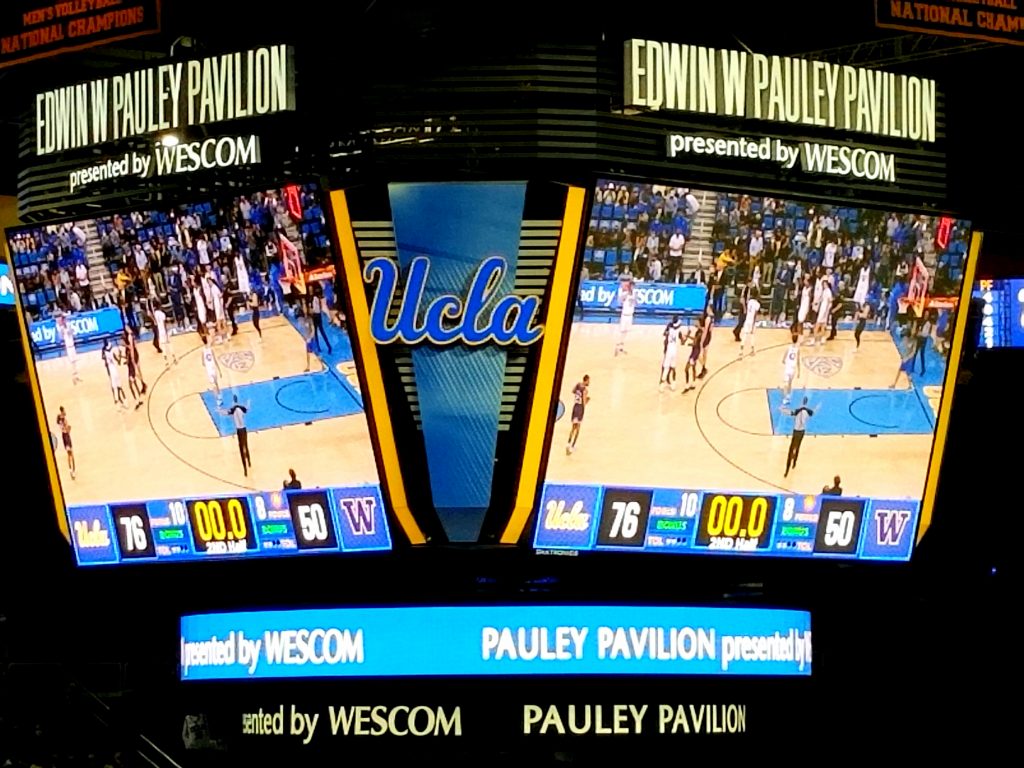
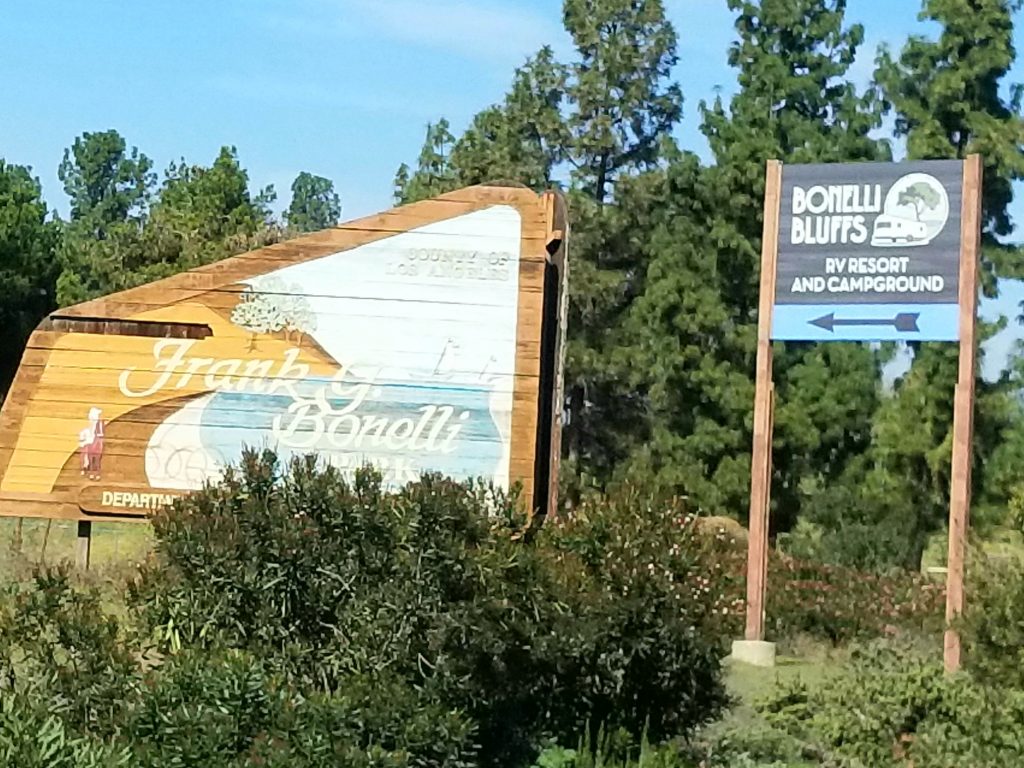
First stop—Puddingstone Reservoir to visit Hank’s mom, sister and brother-in-law, plus meet up with friends Kim and Suzie. The Bonelli Bluffs RV Resort & Campground is only 50 miles from our home, but it’s a good location from which to visit people in the San Gabriel Valley and other eastern parts of L.A. County.
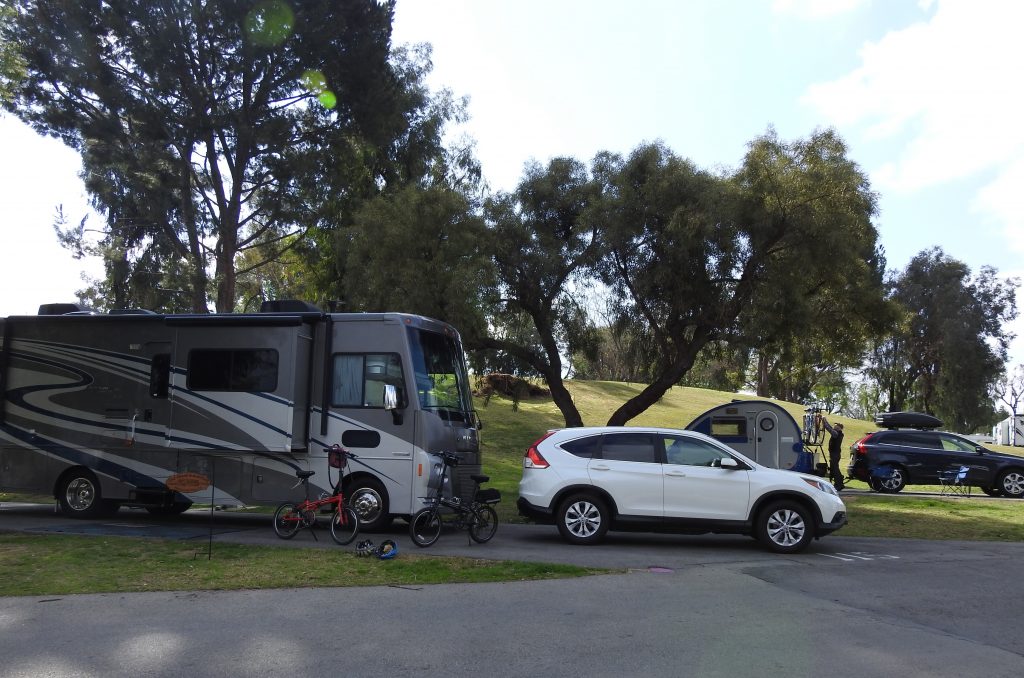
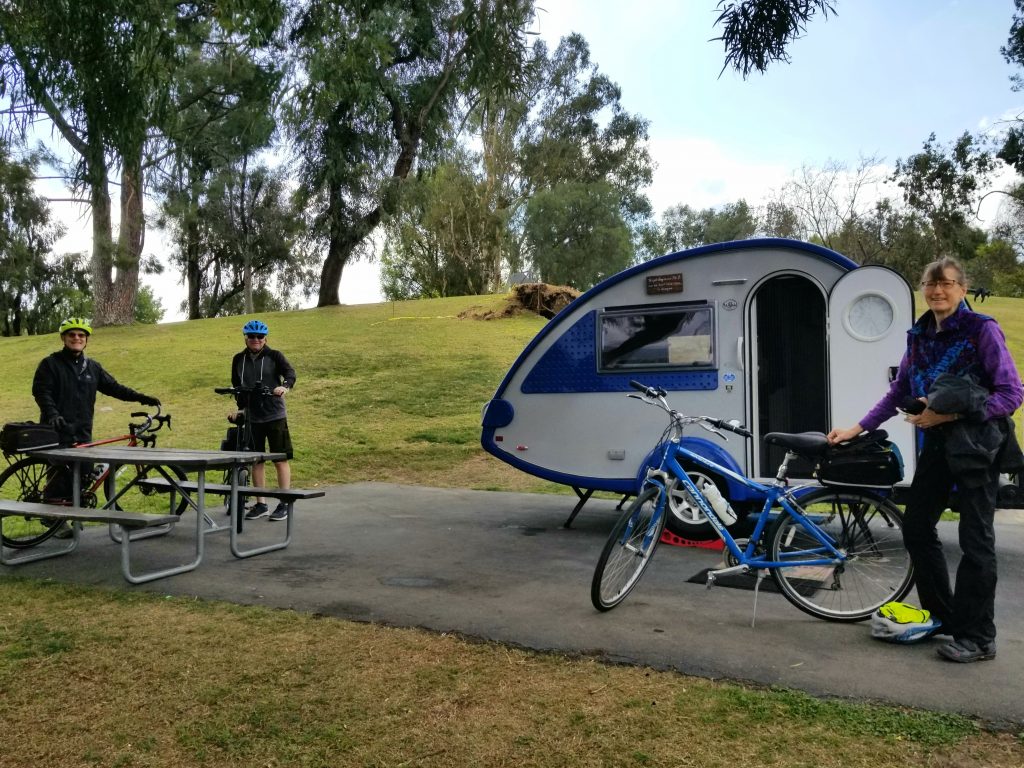
Our time at Puddingstone included a bike ride all the way around the reservoir, our first time crossing the dam and completing the whole loop (about 6 miles). Lots of birds, including white pelicans, egrets, and coots, made for a very enjoyable ride. If you decide to do this bike ride, be aware that the back side is not paved and could be mucky after a rainstorm.
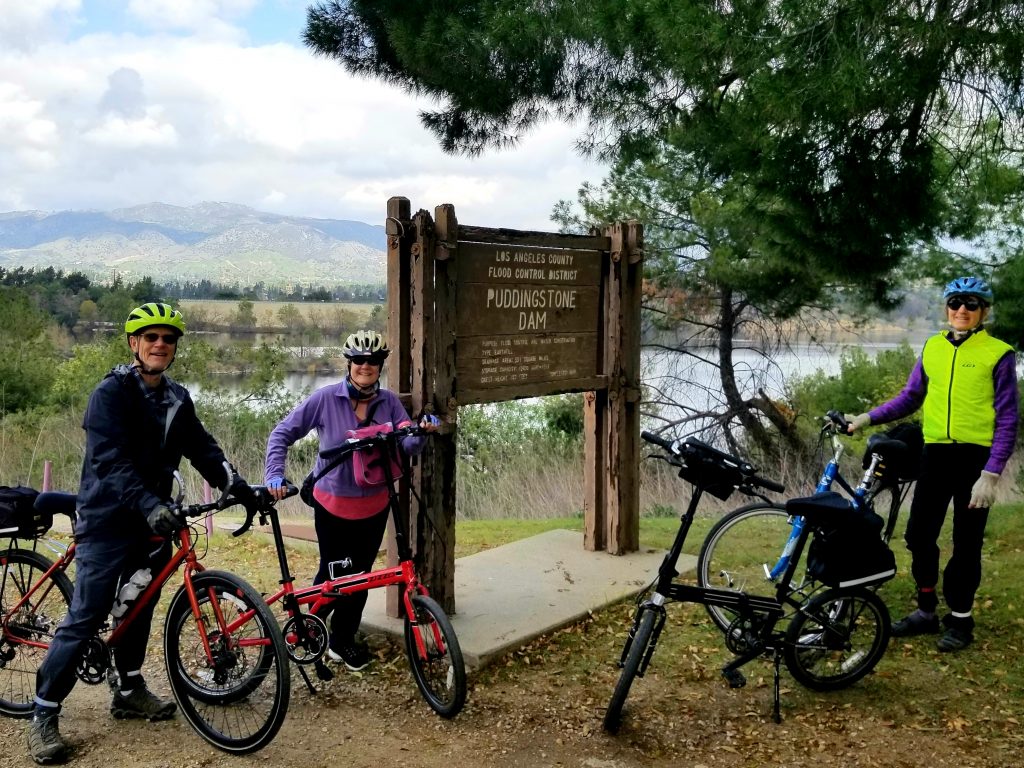
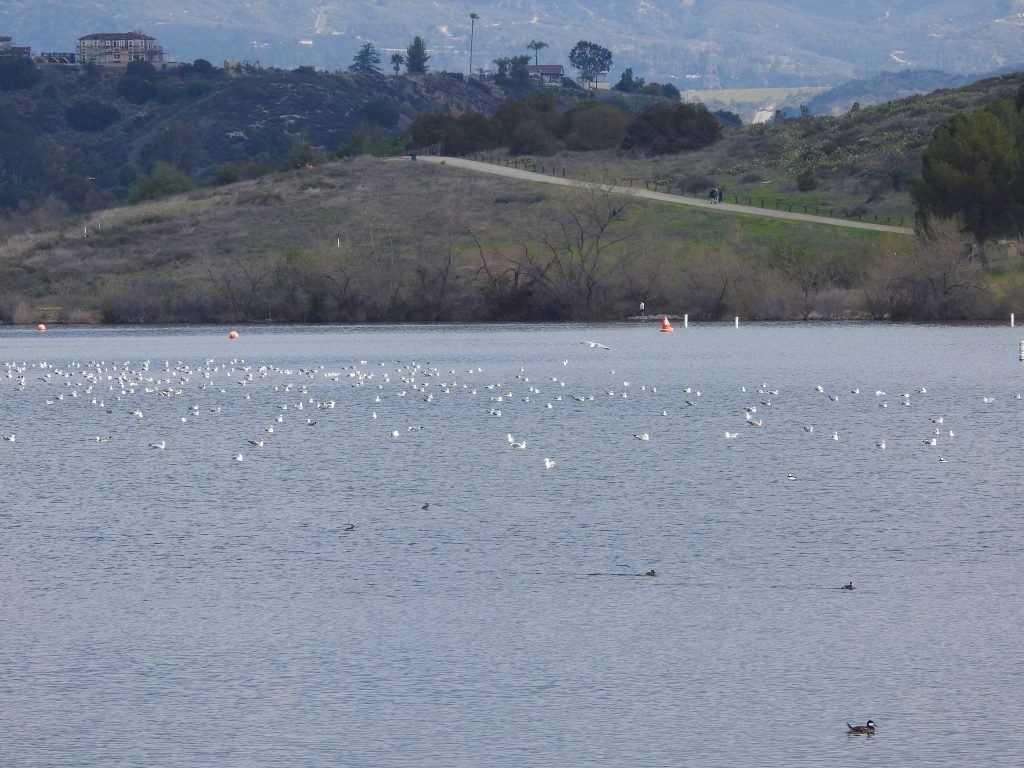
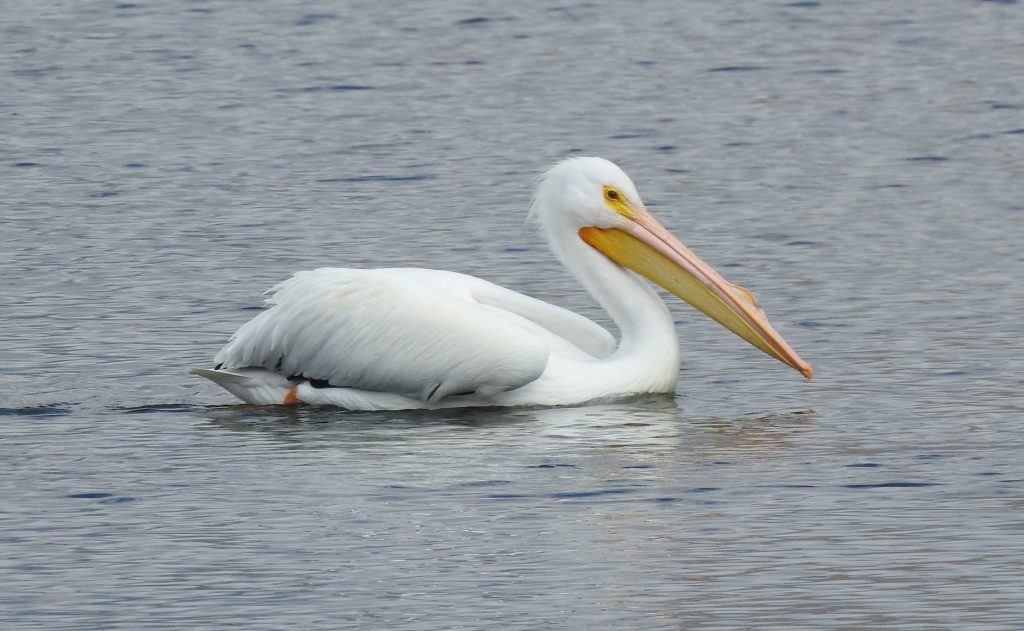
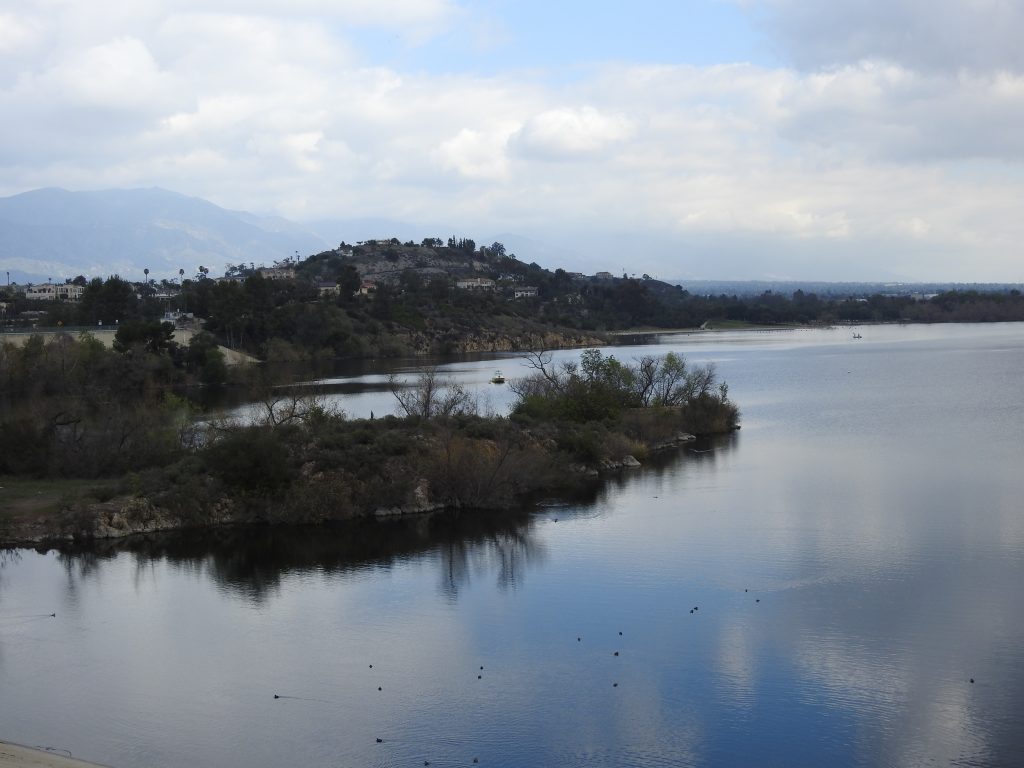
We celebrated our accomplishment with dinner at Gus’s Barbecue in Claremont. The baby back ribs were delicious!
Second stop—White Tank Mountain Regional Park in Maricopa County outside Phoenix, Arizona. This was a last-minute addition to our itinerary, since the weather near the Grand Canyon was going to be down into the teens (Fahrenheit) and below. The Family Campground in this county park is outstanding for its cleanness and RV spacing with both water and electrical hookups. We would definitely come back here to do more exploring, (biking and hiking) though I imagine it is very hot in the summer.
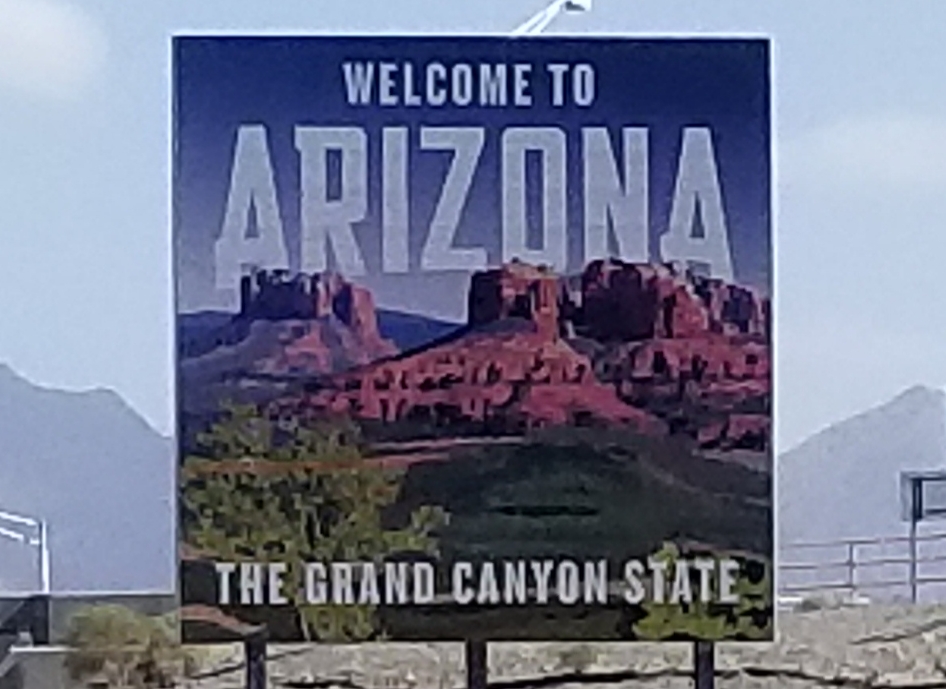
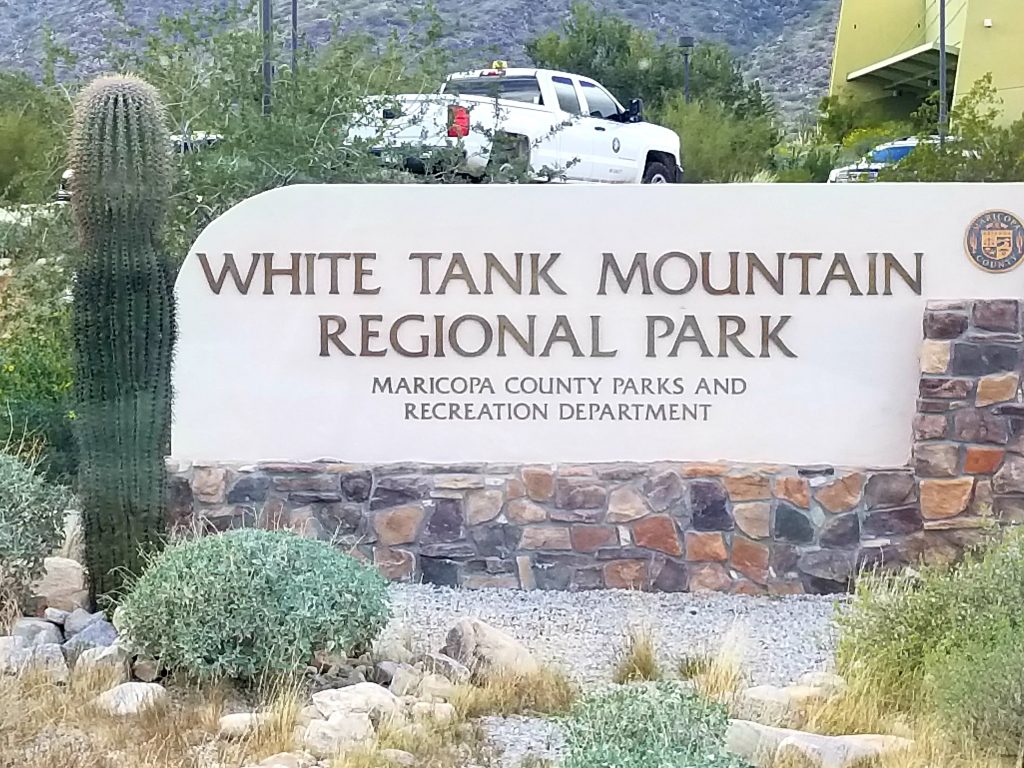
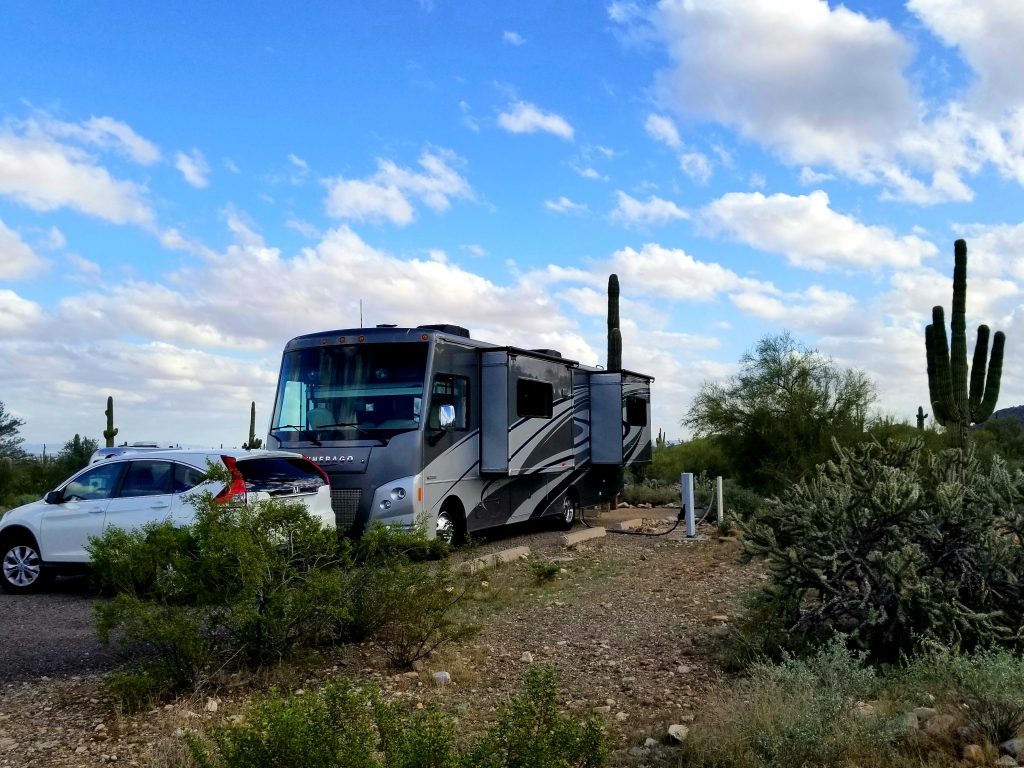
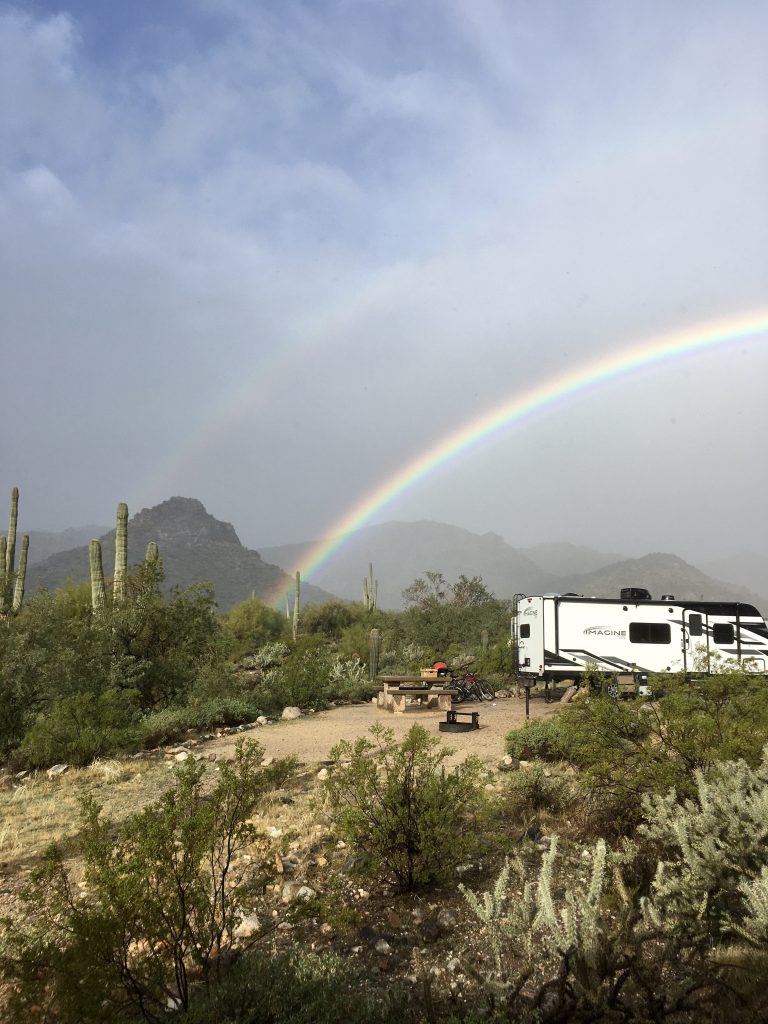
We did not know what the name “white tank” meant, but we soon learned that during seasonal rainfall, water gradually erodes depressions in the white granite at the base of the mountains. These depressions are called tanks, and the Hohokam Indians, who lived in this area over 1000 years ago, used the water in these tanks for agriculture and drinking.
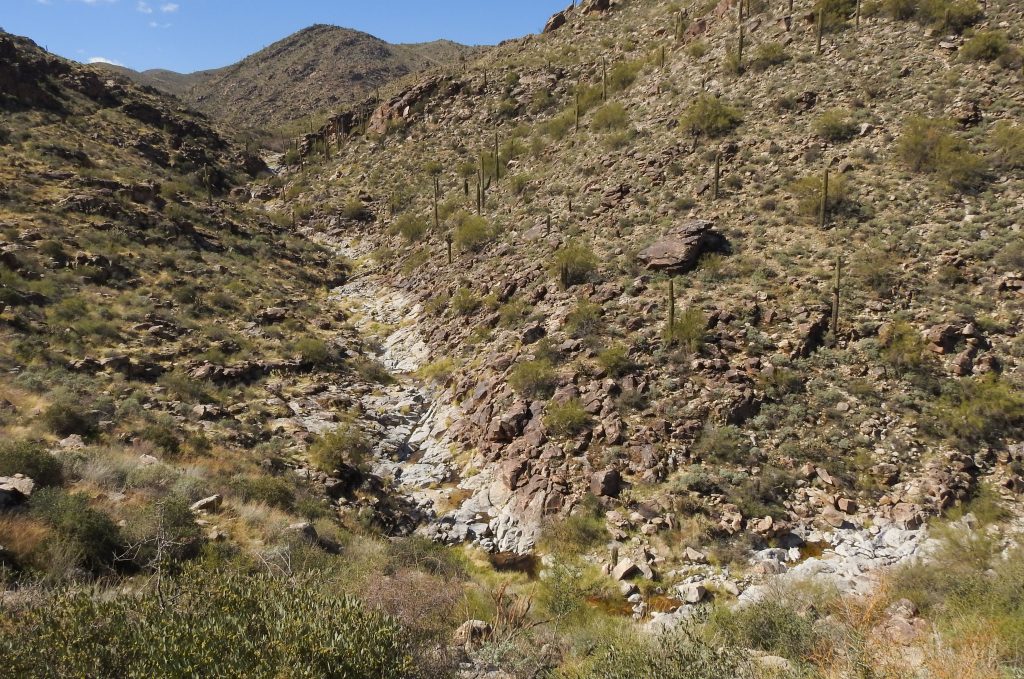
The White Tank Mountain Regional Park provided us with many choices for hiking. Right outside our campground, we explored the Ironwood Trail when it wasn’t raining. It’s a level path through the desert with lots of saguaros, palo verde, ironwood trees, and cholla.
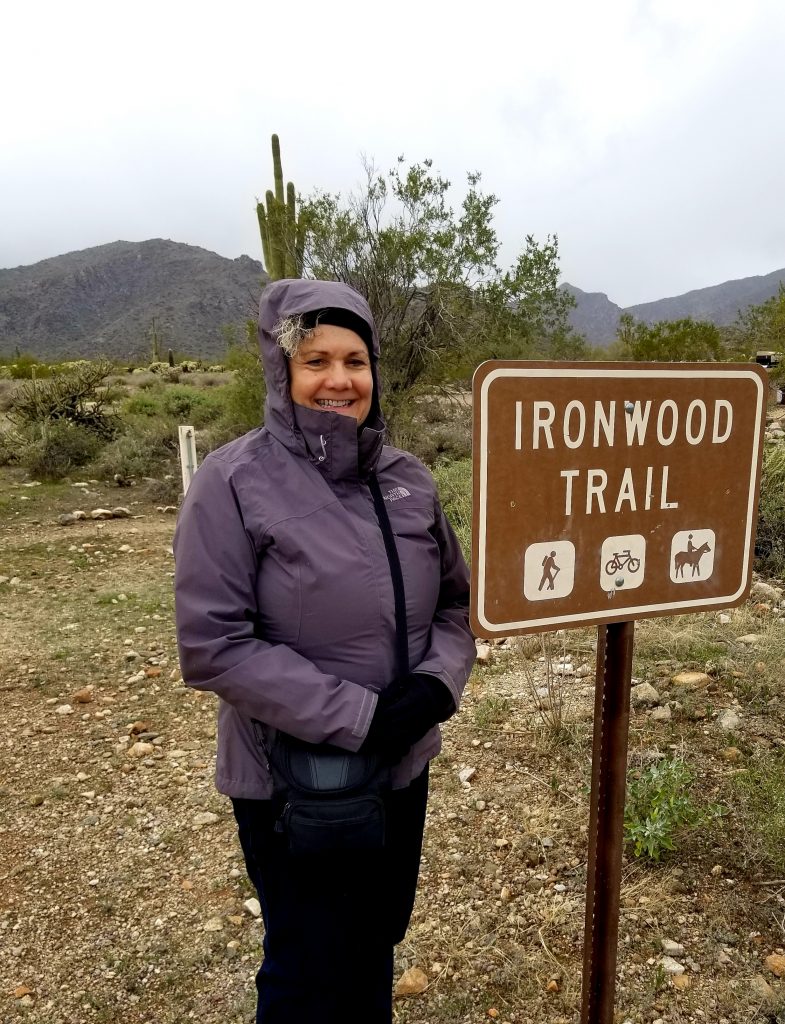
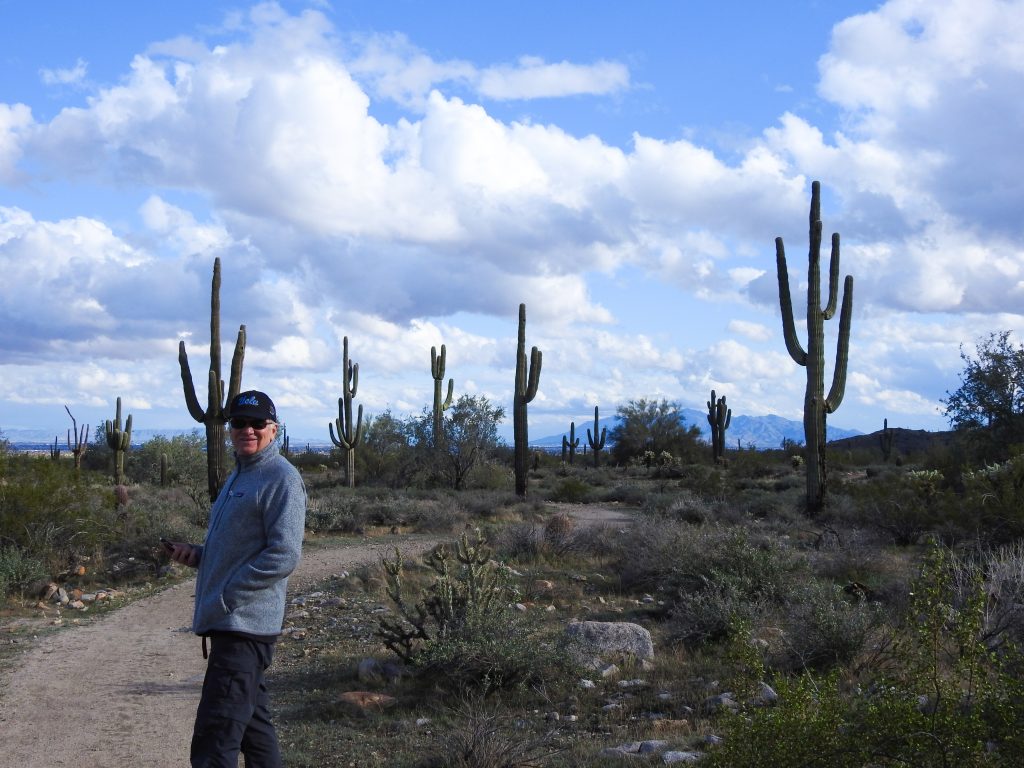
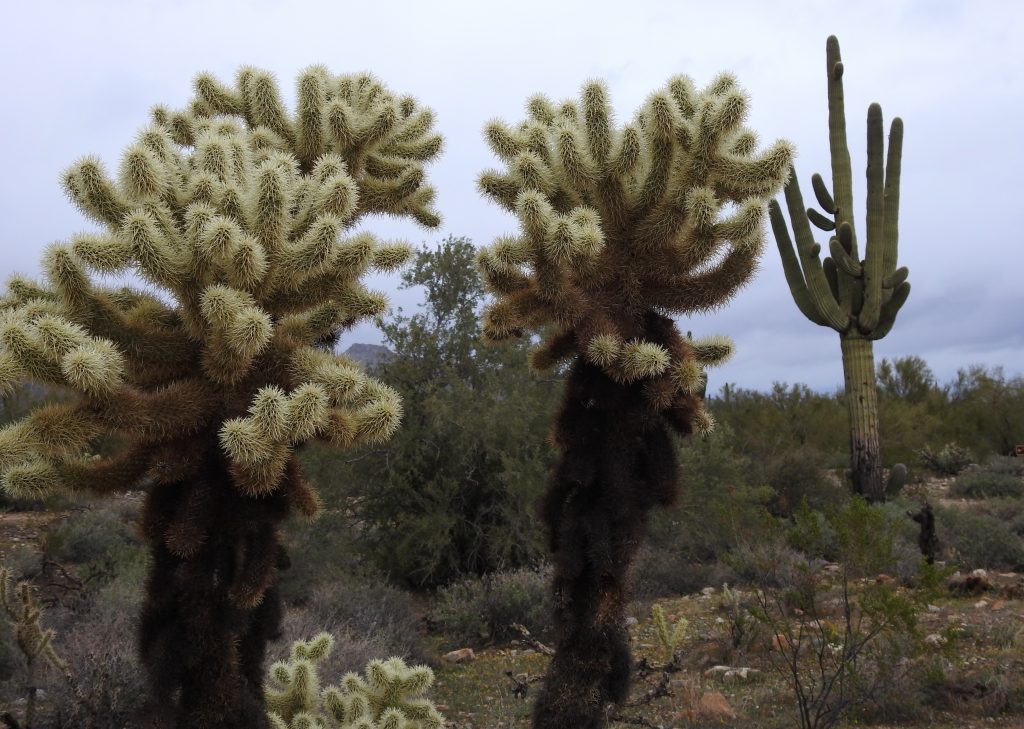
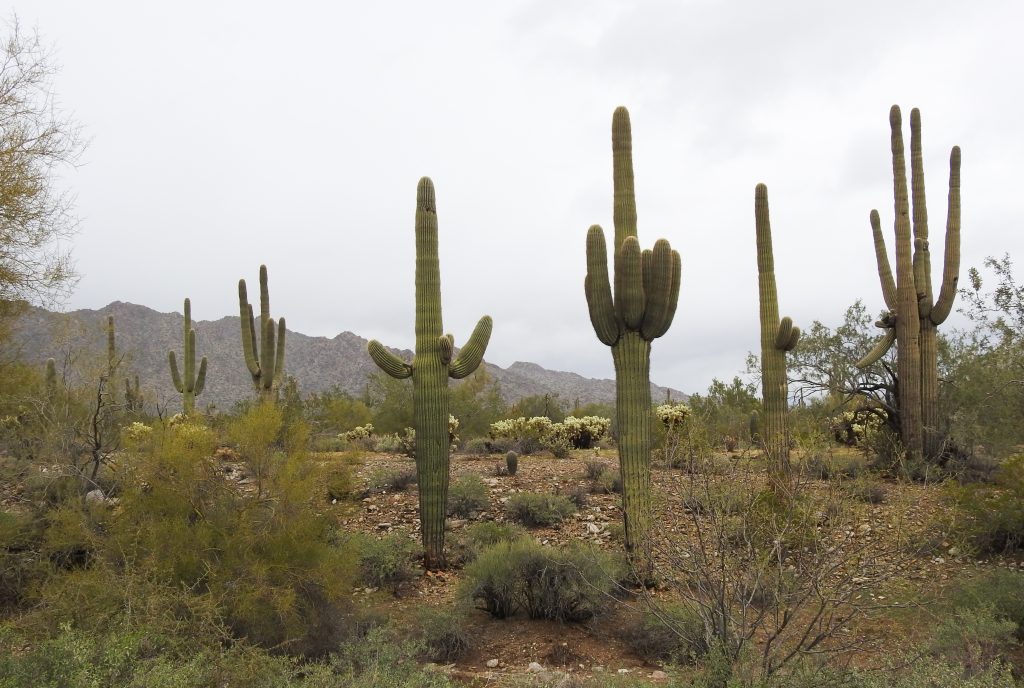
On our sunny but chilly day, we were able to do an 8-½ mile hike on the Mesquite Canyon Trail, which led to a portion of the Ford Canyon Trail and back on the Willow Trail. Being in the high 40s and low 50s made it a perfect day for this hike since there isn’t much shade along the way. We had beautiful views of the mountains and the greater Phoenix area, plus birds, a jackrabbit, and several deer.
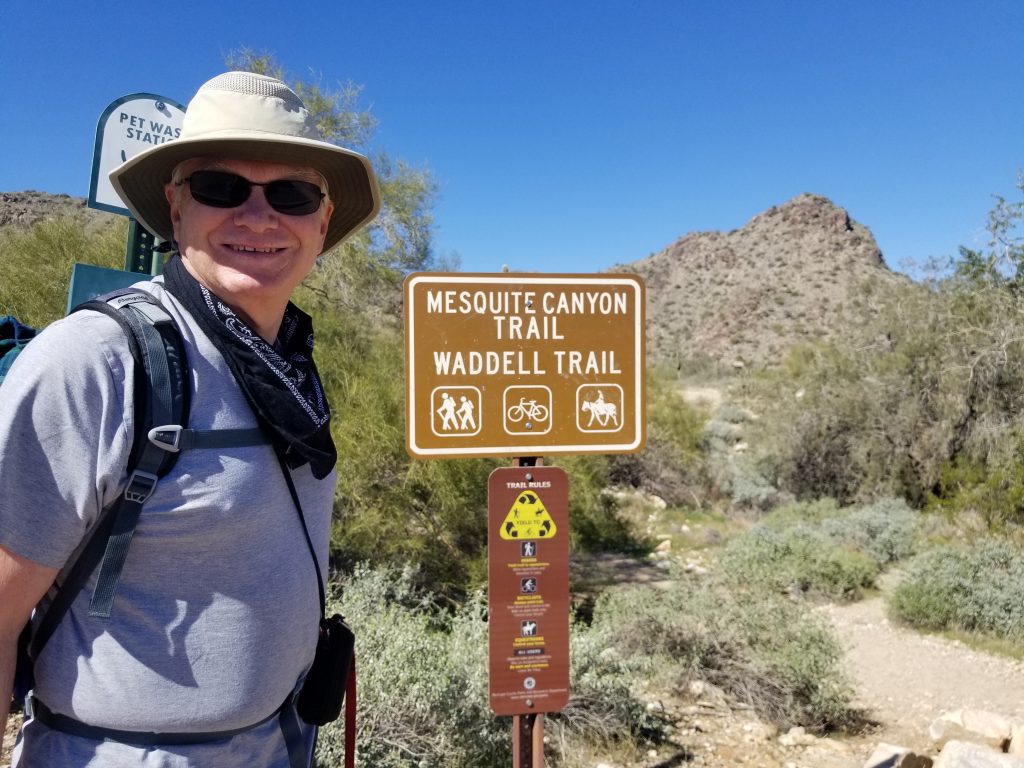
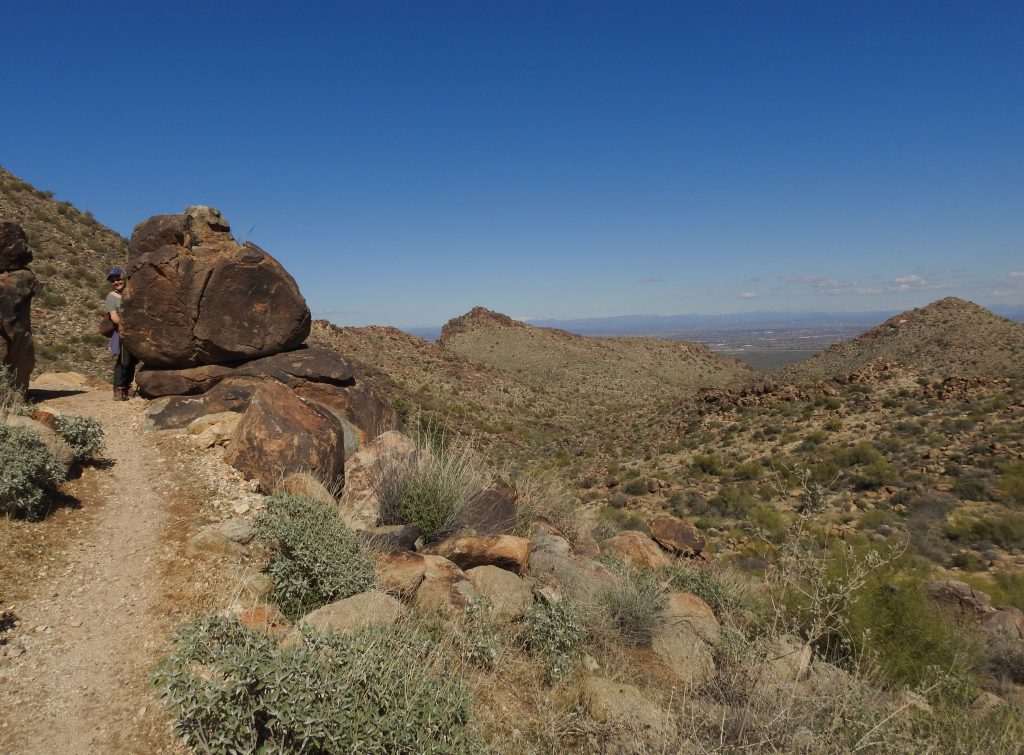
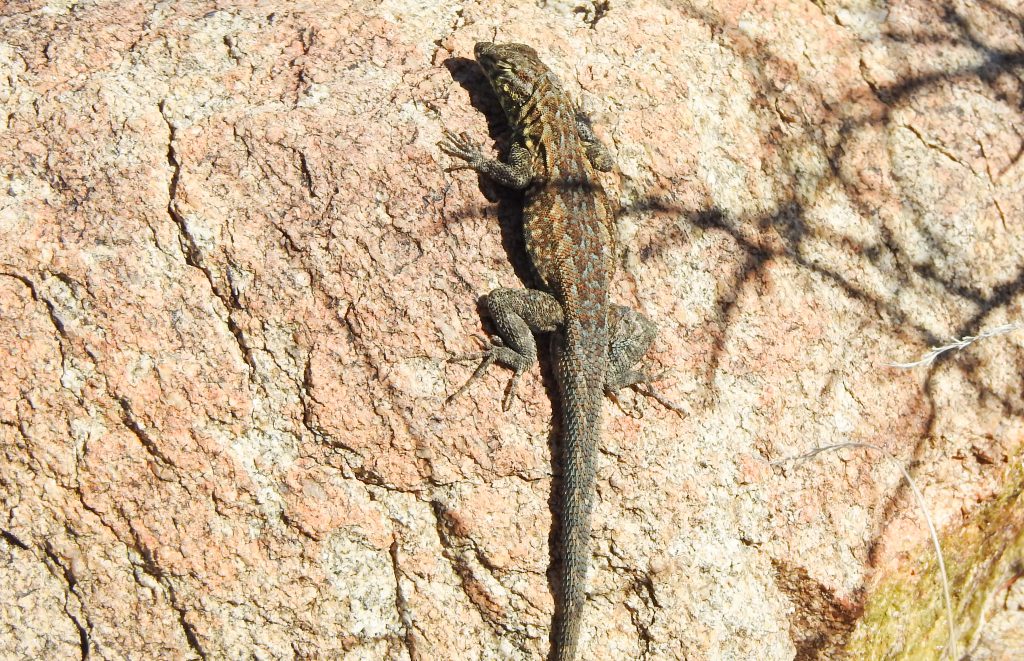
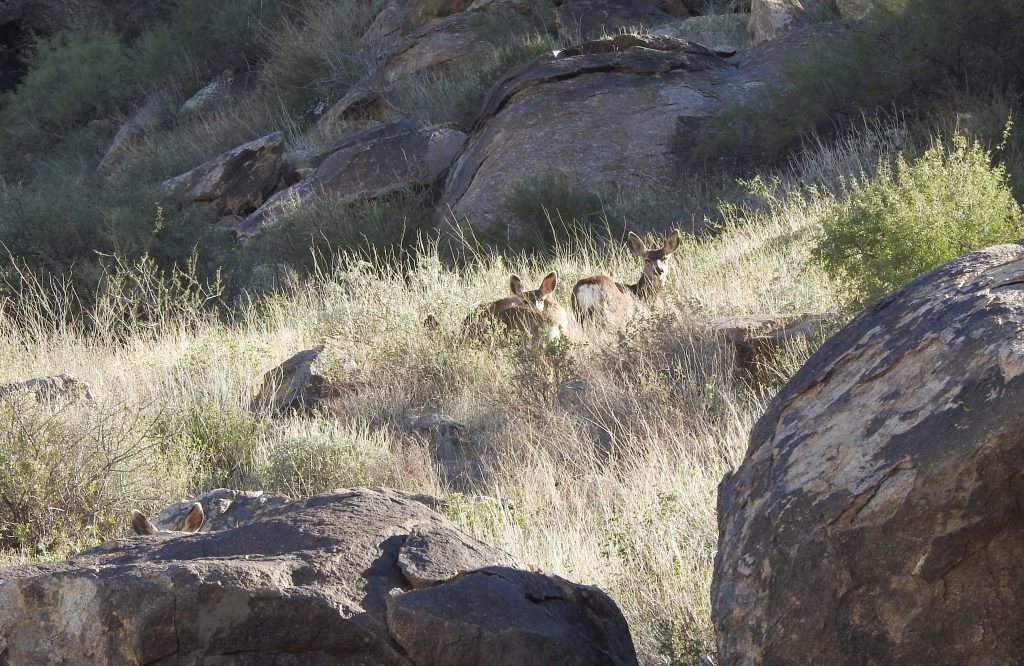
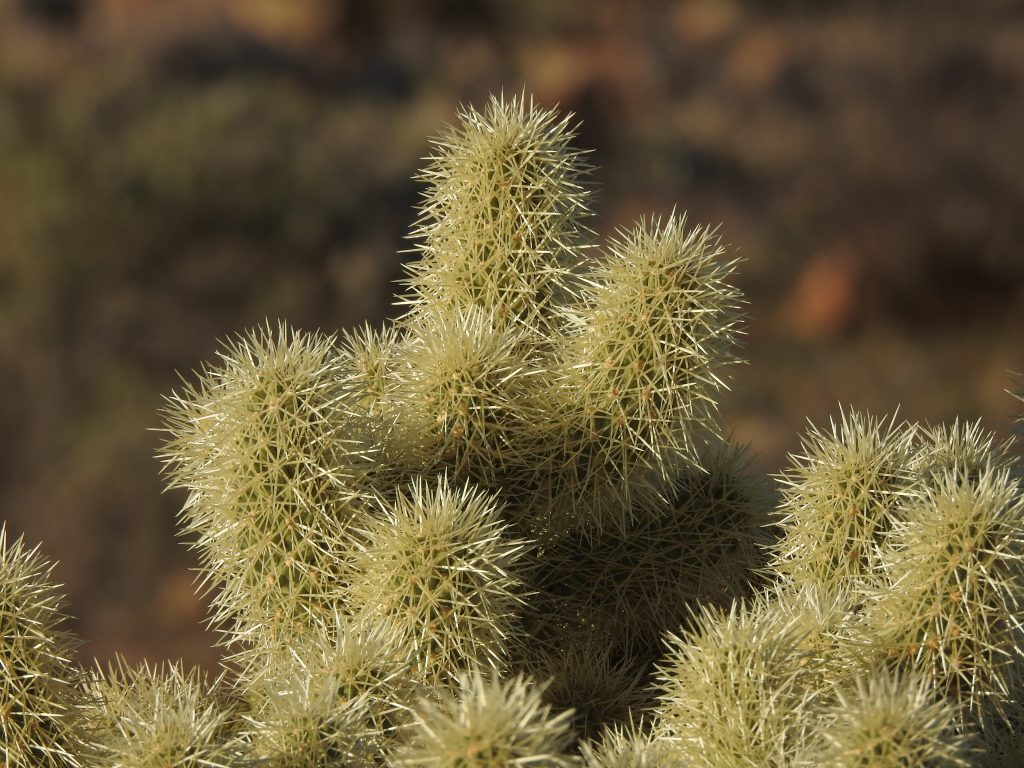
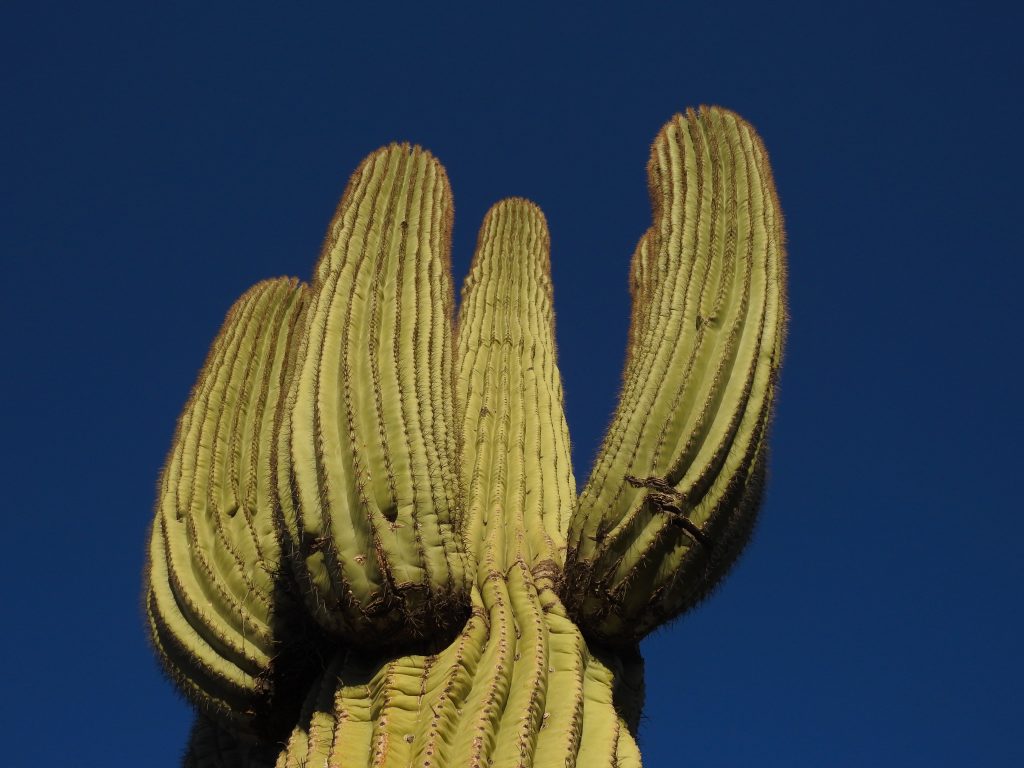
Danno and Leilani agreed that the Family Campground in the White Tank Mountain Regional Park was their favorite campground of the trip. Definitely two paws up (or is it four paws up?)!!
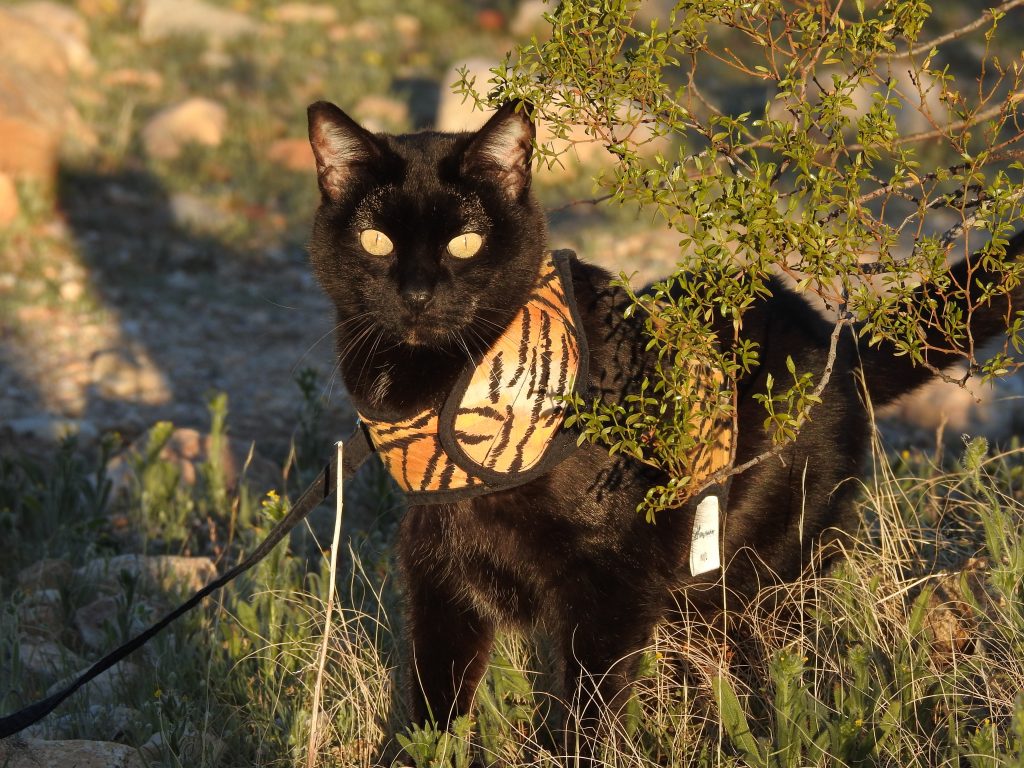
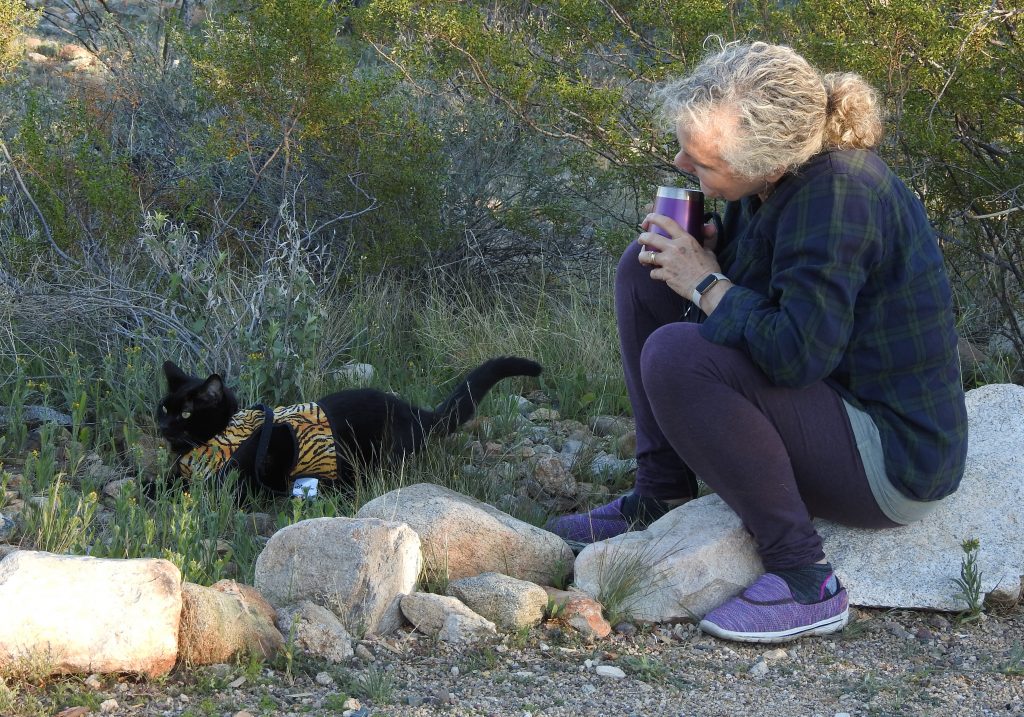
Third stop–After our three days in White Tank, we headed southeast to the Tucson area to camp at another county park, the Gilbert Ray Campground in Tucson Mountain Park. Gilbert Ray is not quite as upscale as the previous county campground, but it is in a lovely location surrounded by more saguaros than we had ever seen before. We like these kinds of campsites, where you have a lot of natural features and space between sites. We could hear coyotes howling each night we were here, and the sunrises and sunsets were gorgeous.
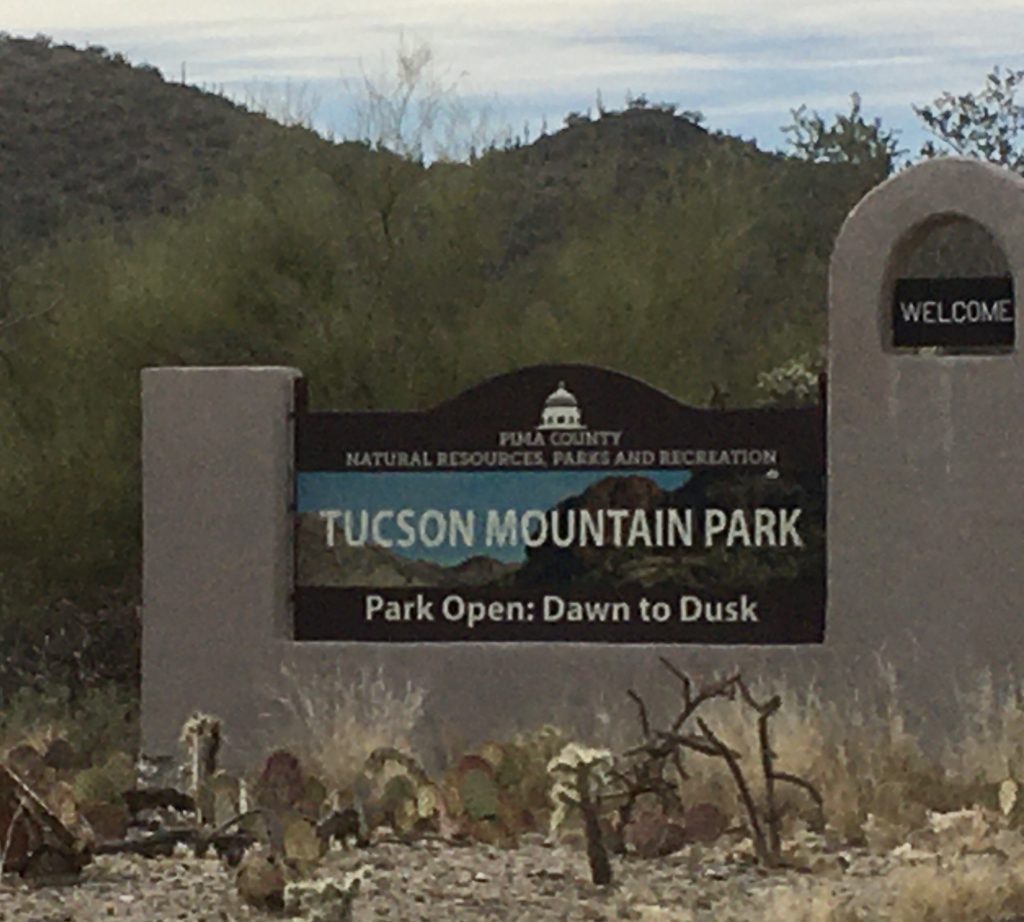
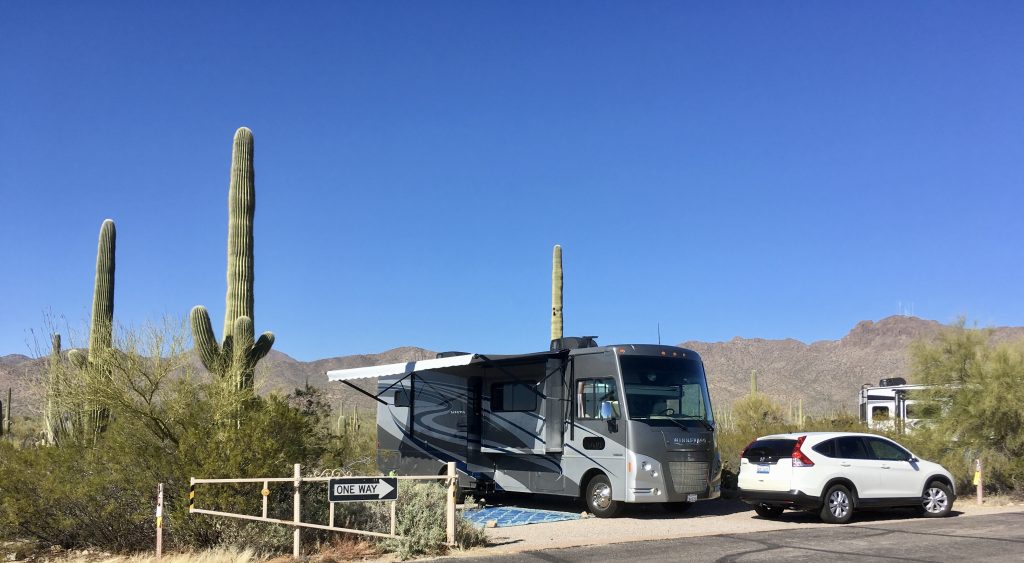
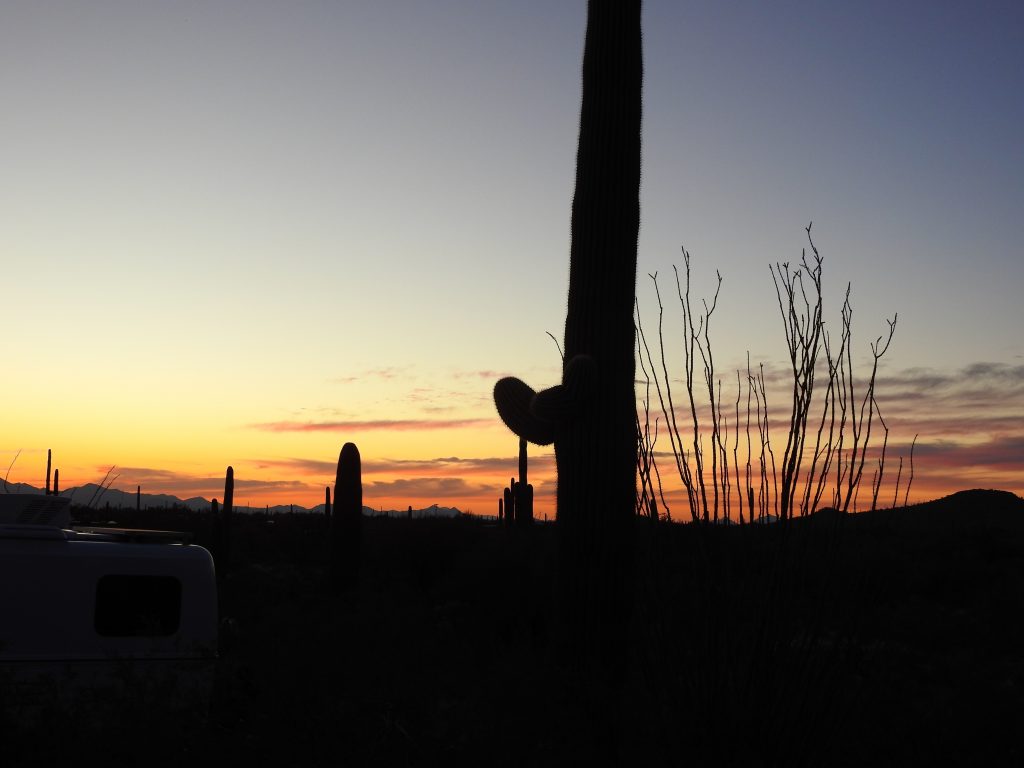

Our friends Kim and Suzie were camping with us at Gilbert Ray, so we did several things together during our stay. First up was the Arizona-Sonora Desert Museum, where we saw tons of native plants and animals, including a mountain lion, javelinas, a bobcat, an ocelot, a Sonoran desert toad, and endangered Mexican gray wolves. Very well done.
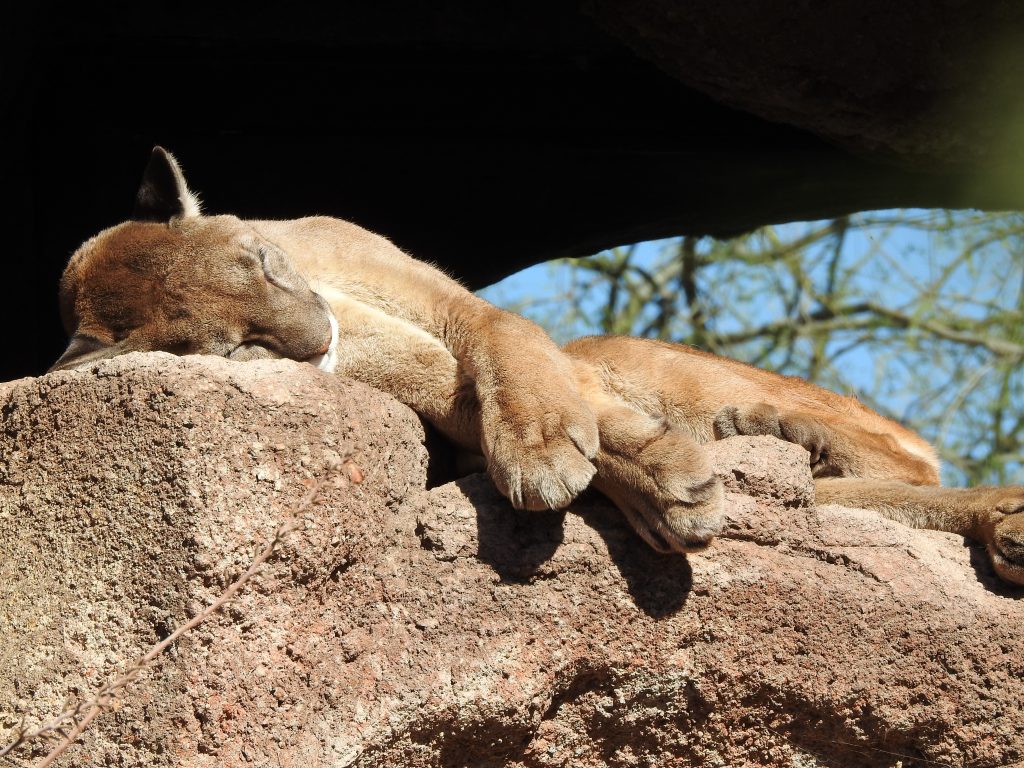
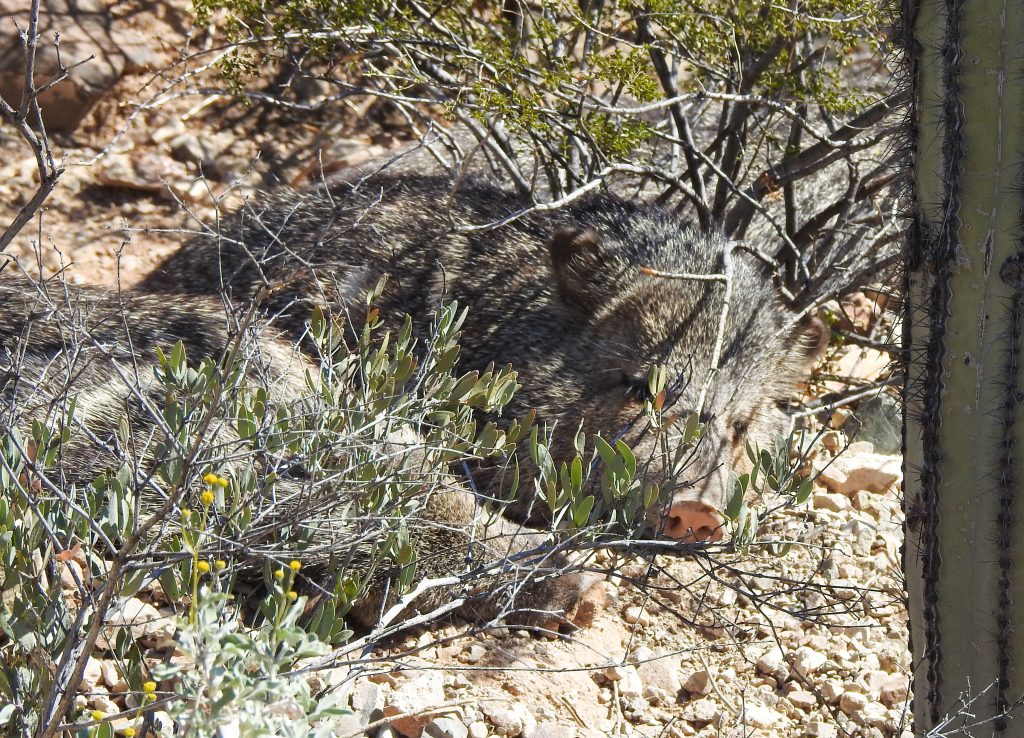
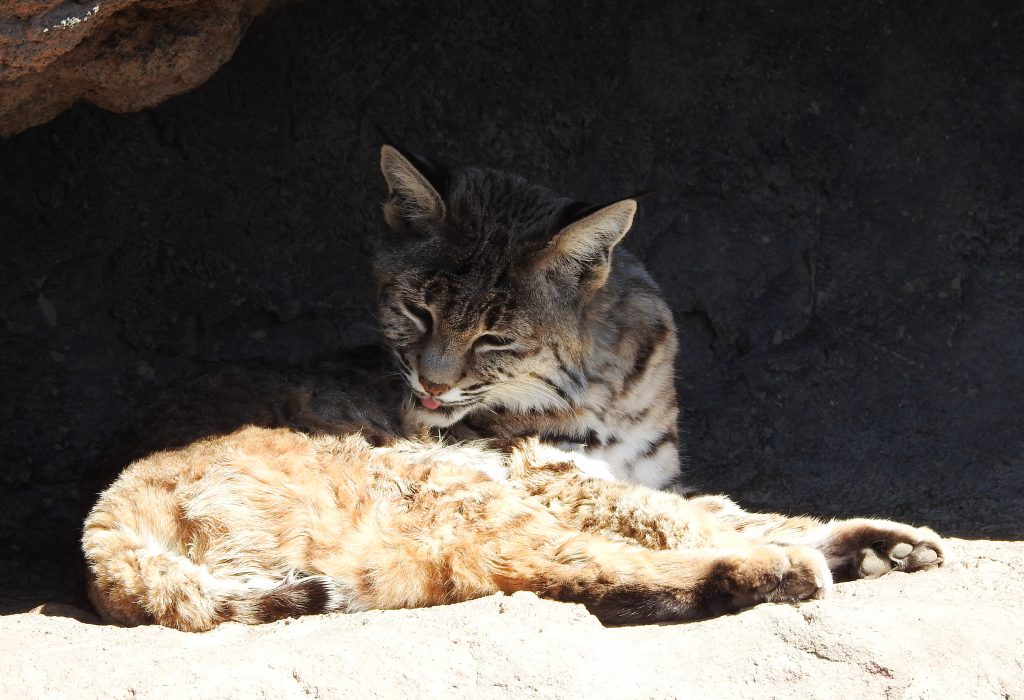
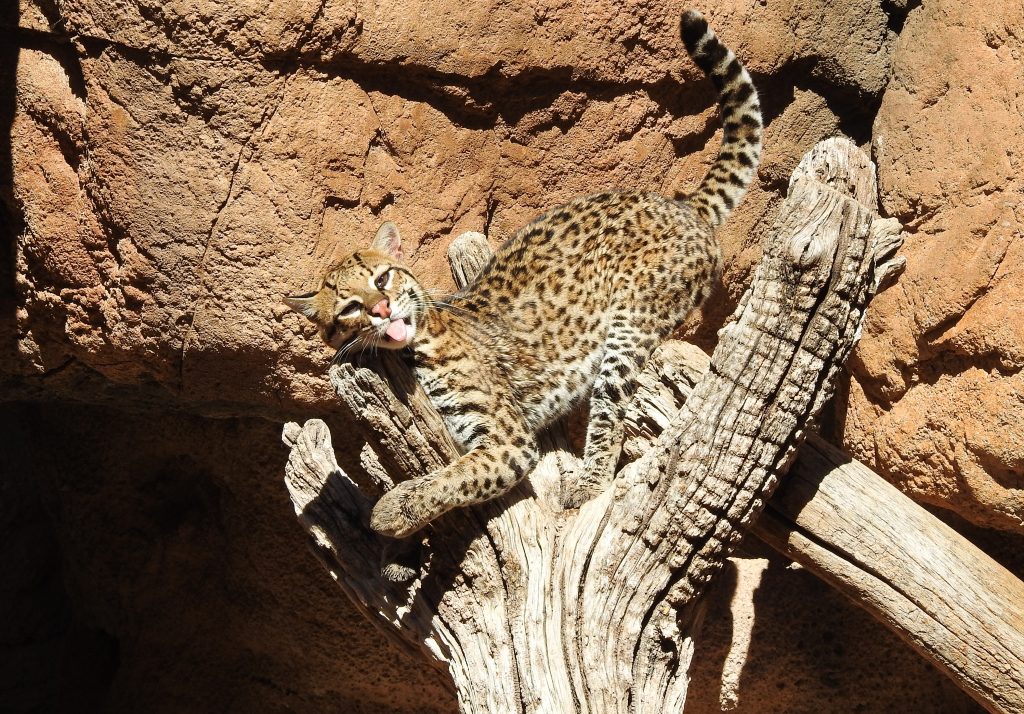
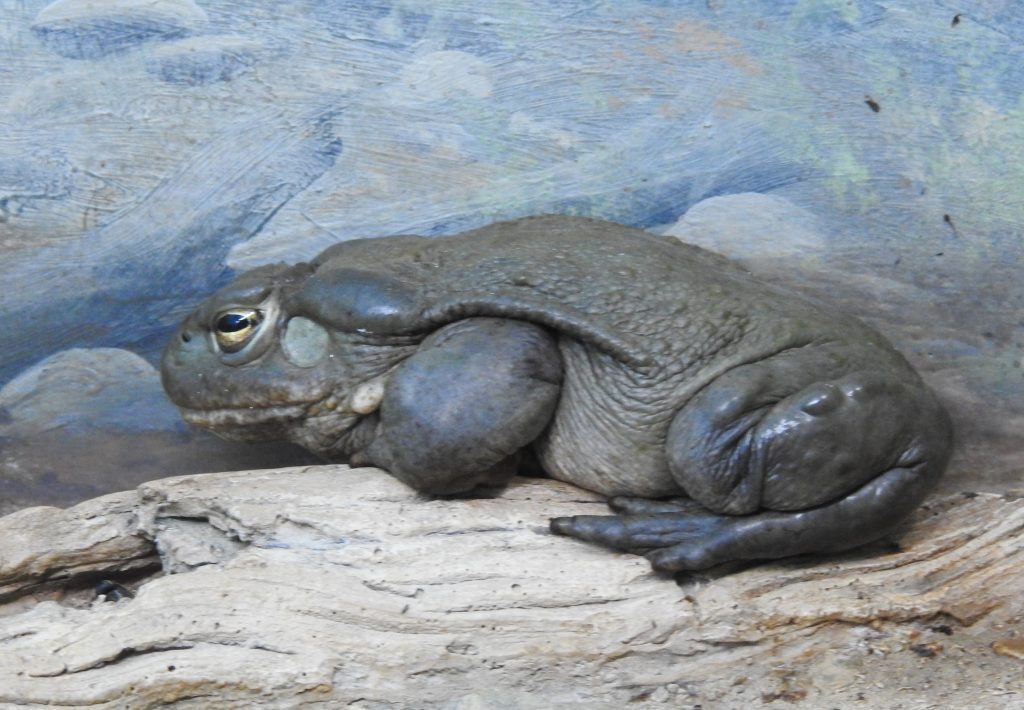
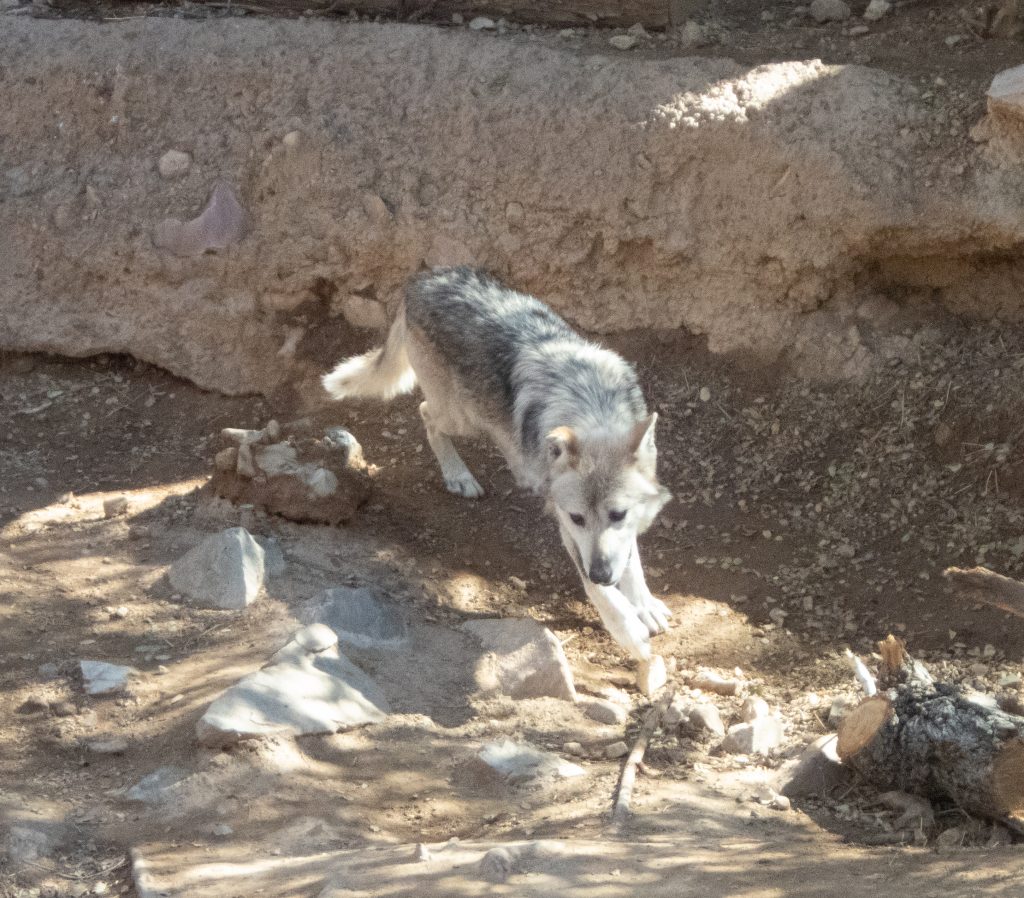
Next we headed up to Saguaro National Park West (Tucson Mountain District) to purchase my National Park Pass at the Red Hills Visitor Center (acquiring this lifetime pass is a great way to celebrate turning 62). This area became a national park in 1994 with one section west of the city (the Tucson Mountain District, where we focused on this trip) and the Rincon Mountain District east of Tucson (where we focused in 2018—see our previous blog post)
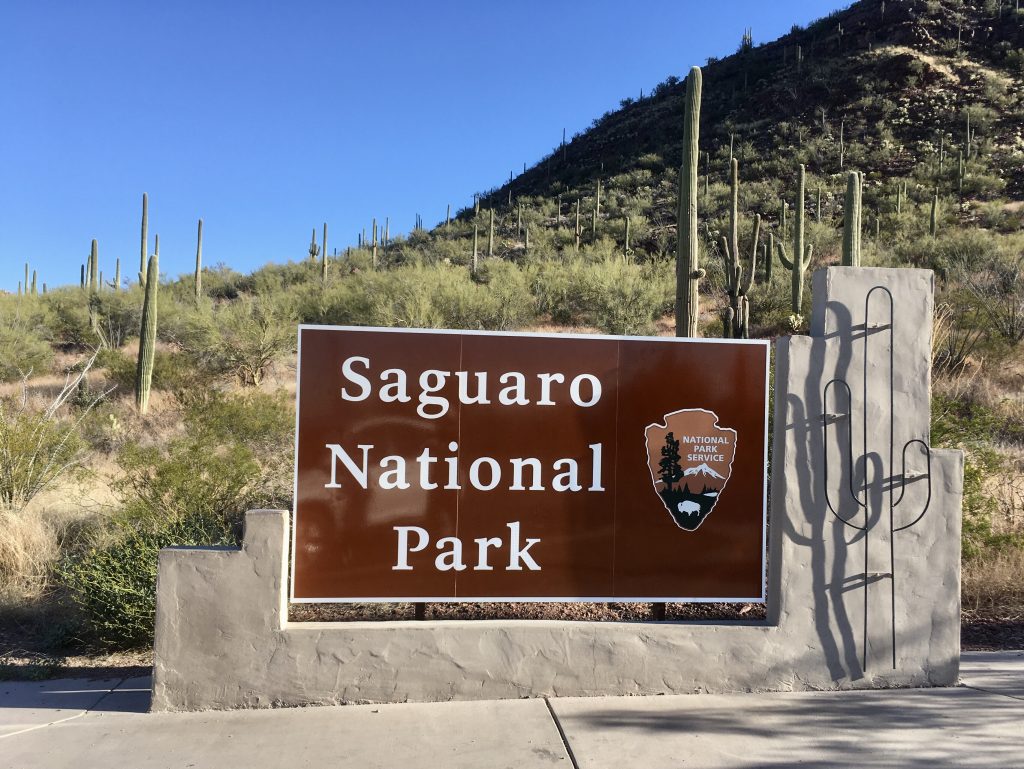
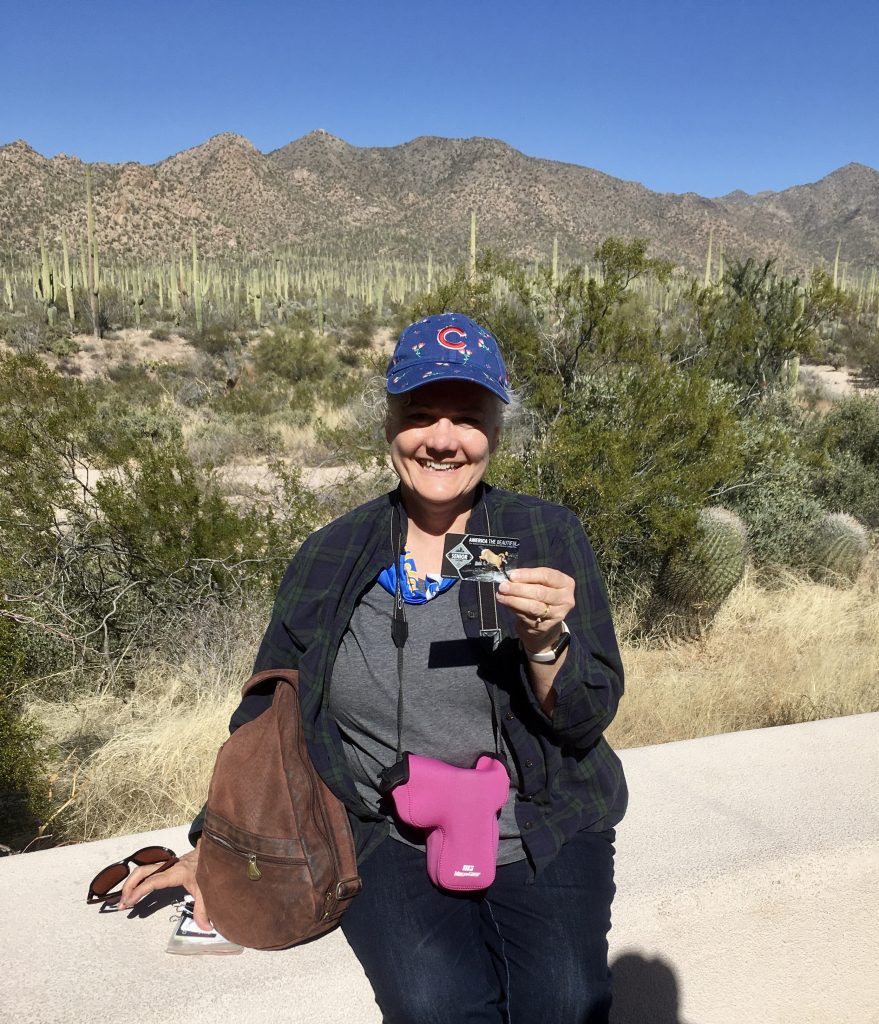
In the west part of the park, we drove the Bajada Loop Road, a gravel and dirt road with gazillions of saguaros and beautiful rock formations along the way.
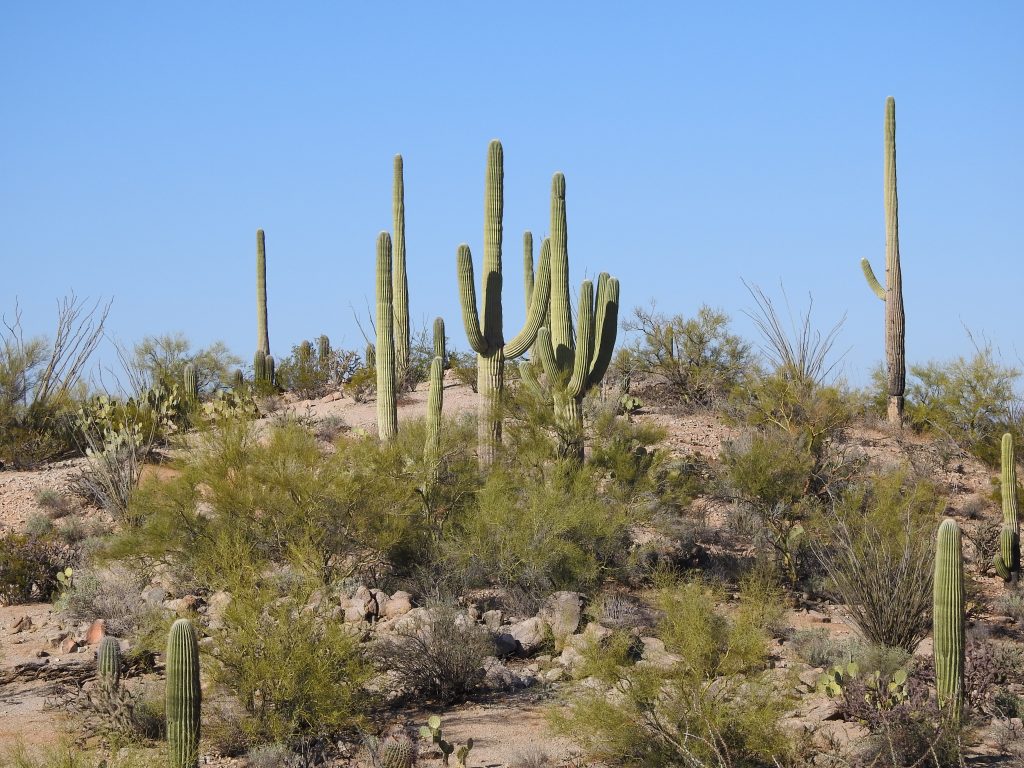
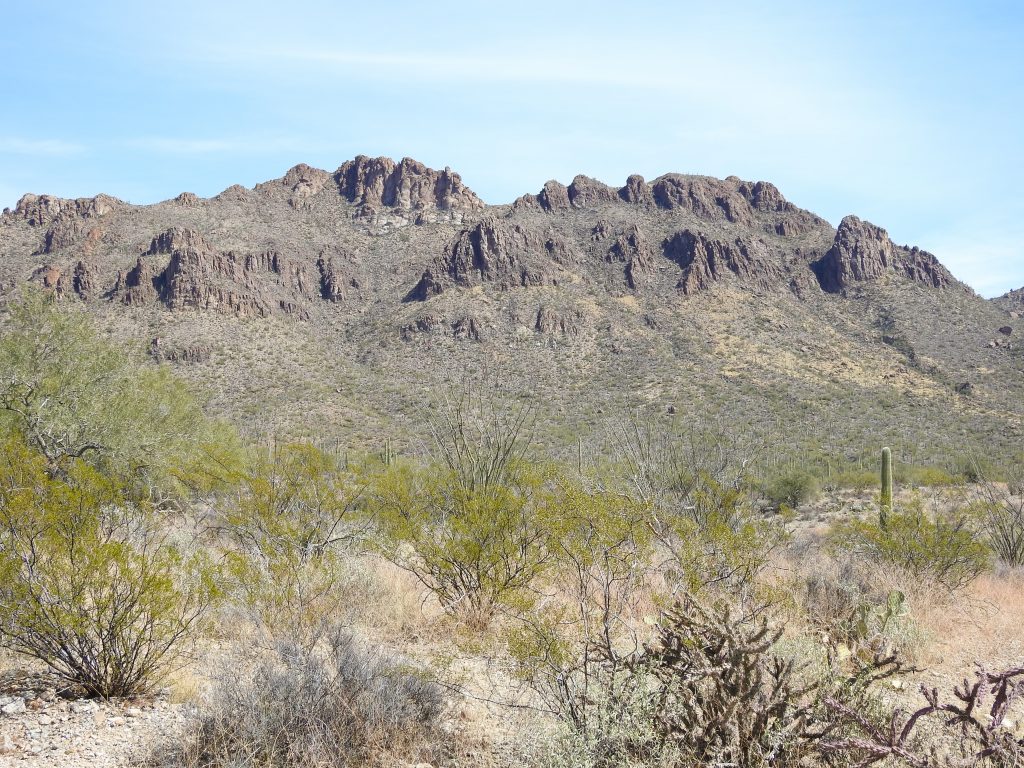
About 2/3 of the way around this 6-mile drive, we did a ½-mile (round trip) hike to see the Signal Hill Petroglyph Site which contains over 200 Hohokam (Native American) petroglyphs carved into the rock surfaces between A.D. 450 to 1450. This is an easy hike to a spot worth visiting. The petroglyphs were very clear and easy to view.
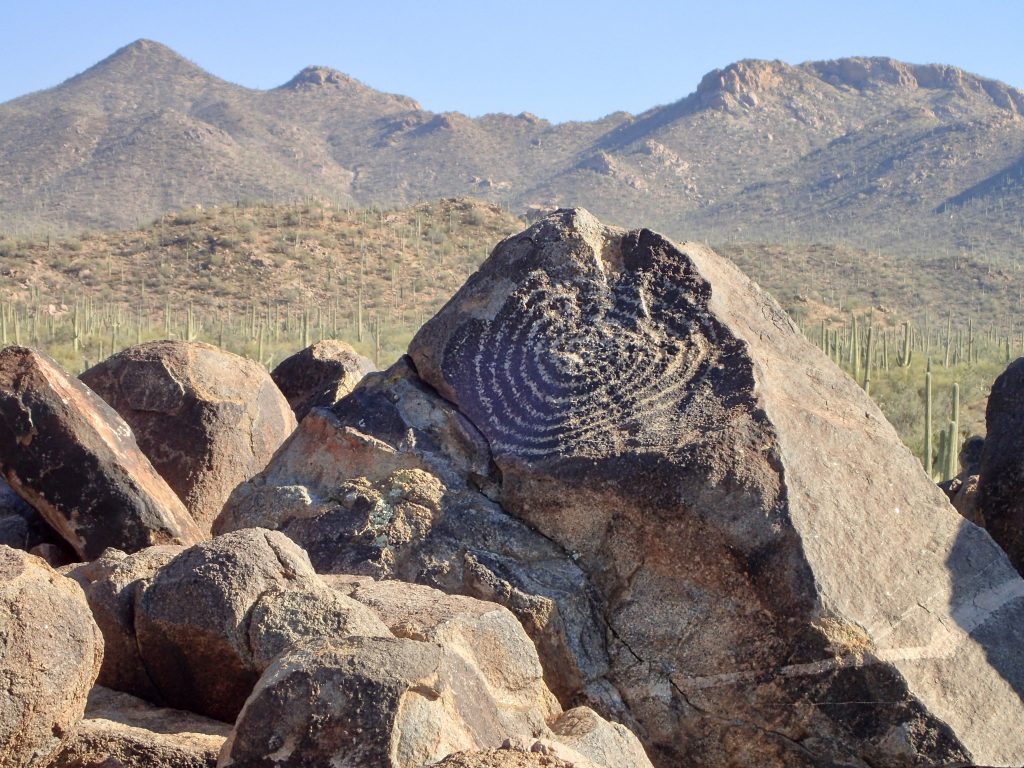
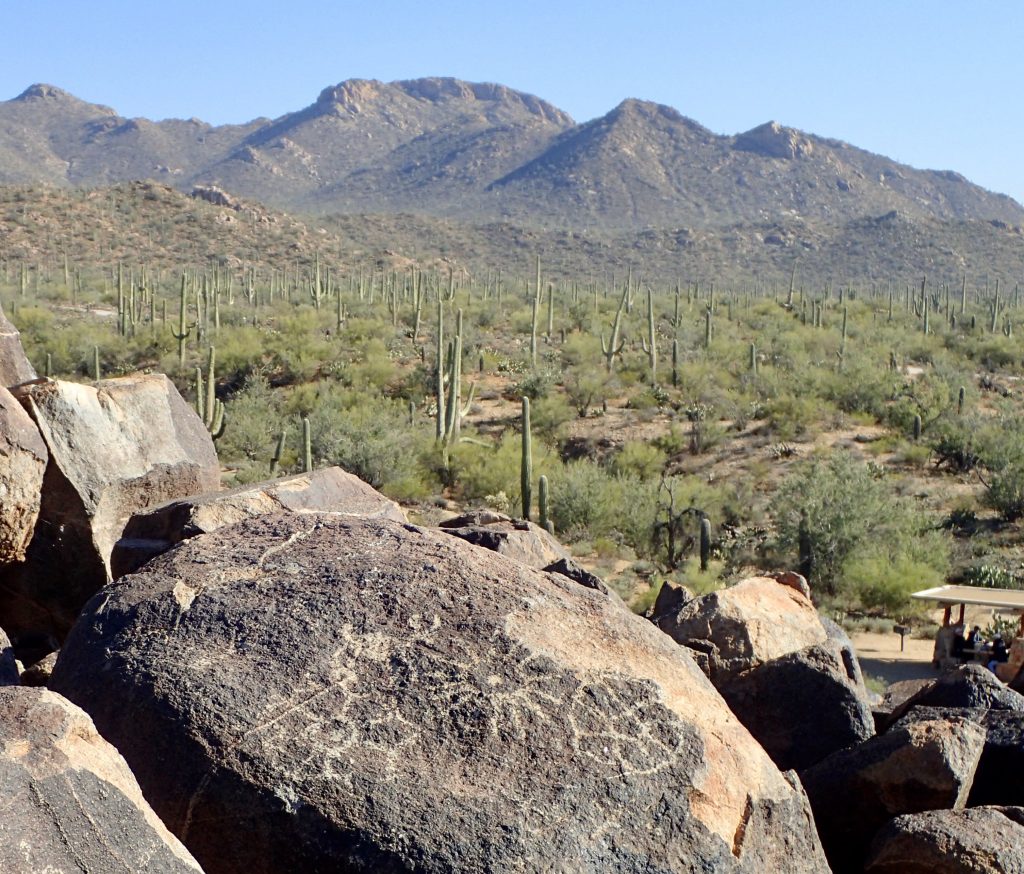
We had wondered why so many vehicles in the Gilbert Ray Campground had raised hoods and Christmas lights scattered on the ground. Apparently this area can be overrun with wood rats that chew on the electrical cables in cars and trucks, so opening the hoods and scattering lights around helps to keep them away. Weird and a bit disgusting, but we added our own lights and raised hoods to join the crowd. Hopefully, it scared off these critters.
Though we tried to go to the Tucson Rodeo the next day, it was sold out, so instead we headed out on our bikes for a rugged ride on a couple of trails near our campground. Though these trails are designed more for hiking and mountain biking, we managed to explore the Powerline and Cougar trails near camp.
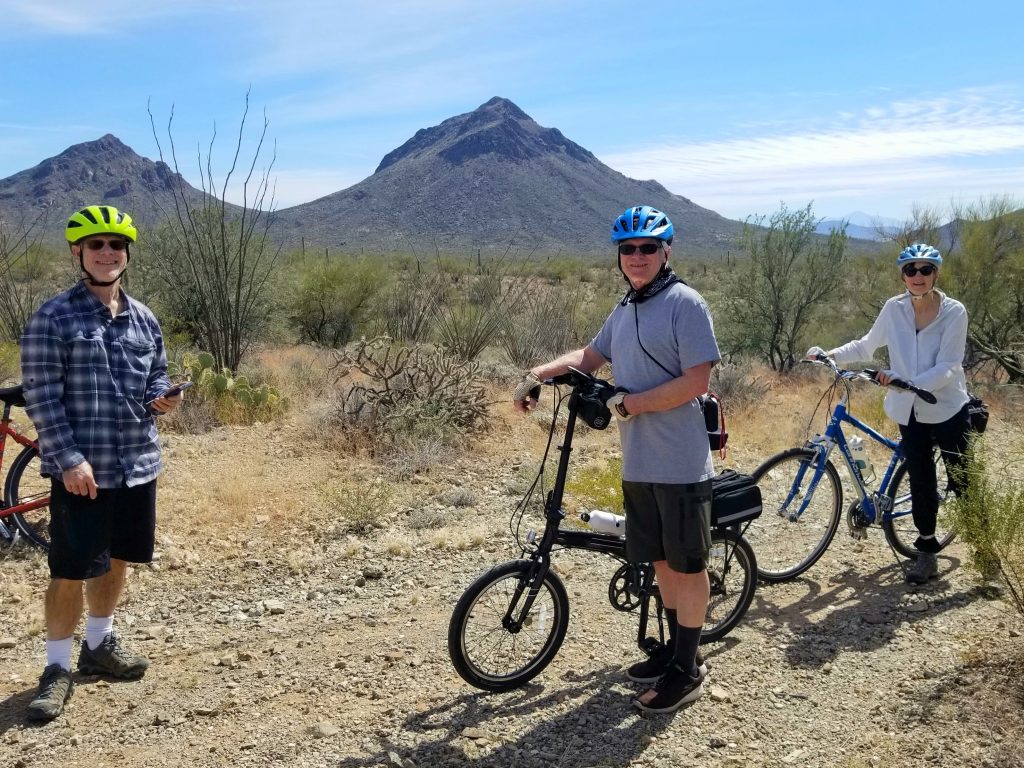
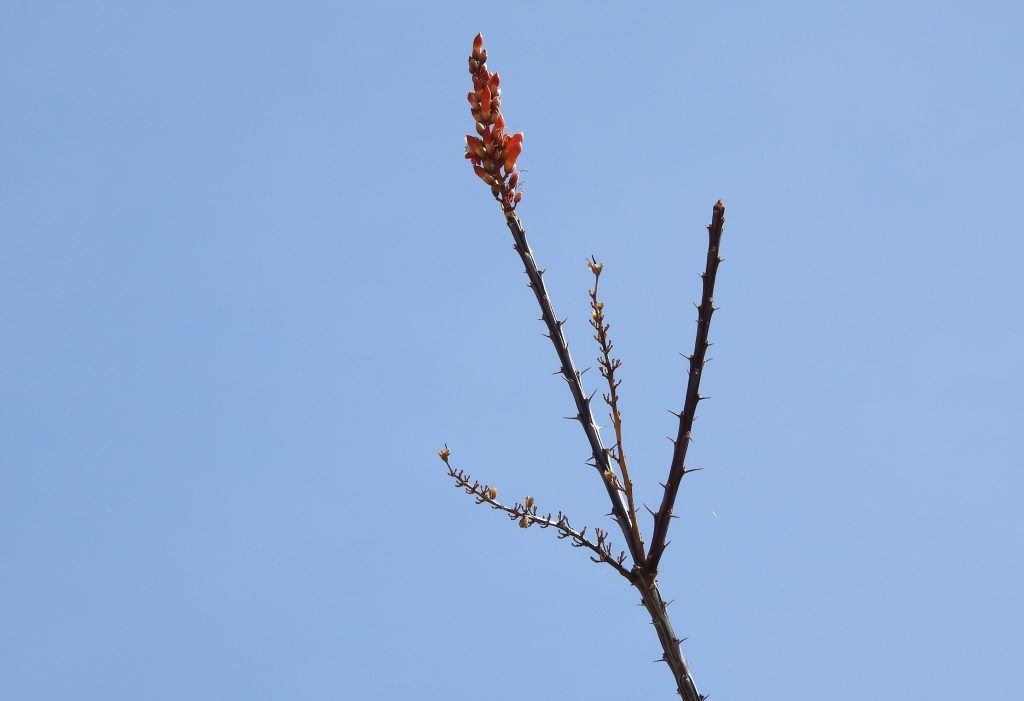
We also drove up the beautiful Gates Pass Road on our way to El Charro Café for dinner. While we waited for a table, we explored the historic downtown area of Tucson, including the Presidio San Agustín del Tucson Museum, the Pima County Courthouse, and some decorative murals.
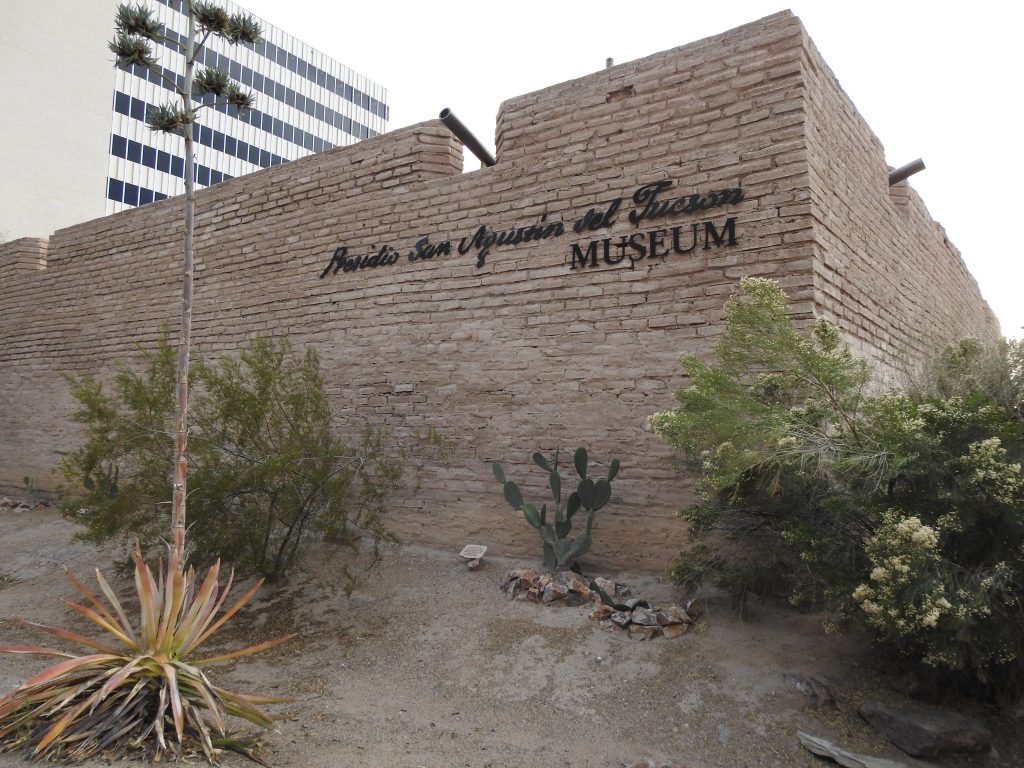
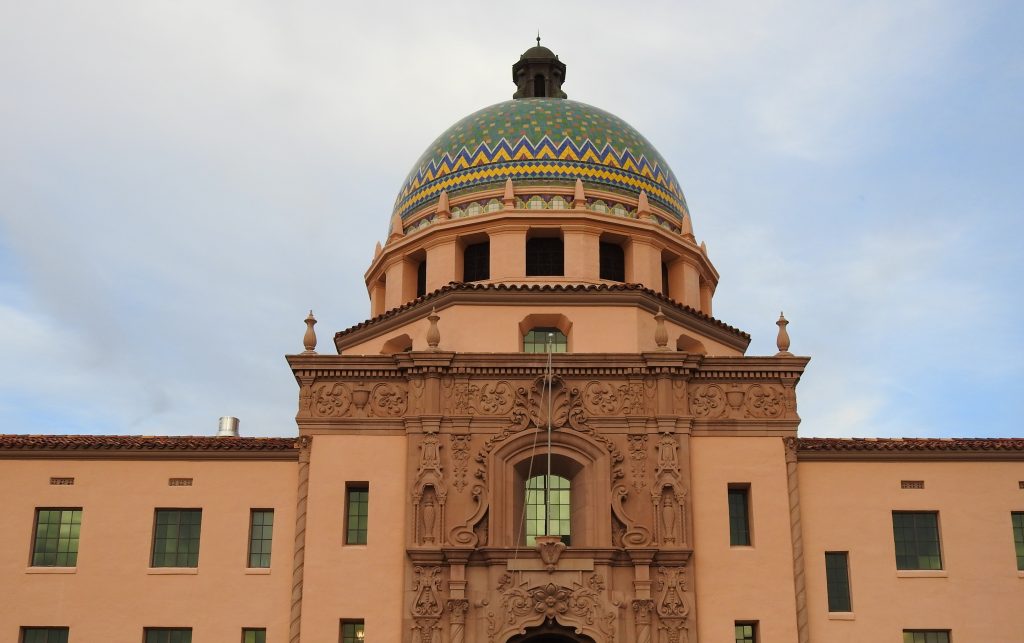
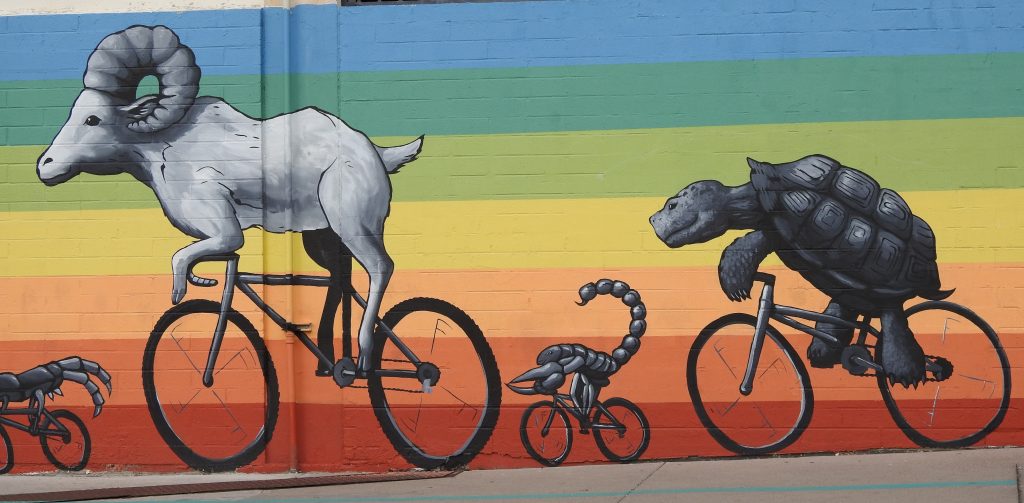
El Charro Café is famous for inventing the chimichanga. It claims to be The Nation’s Oldest Mexican Restaurant in continuous operation by the same family, and it was worth the one-hour wait for a delicious meal in a festive and friendly environment.
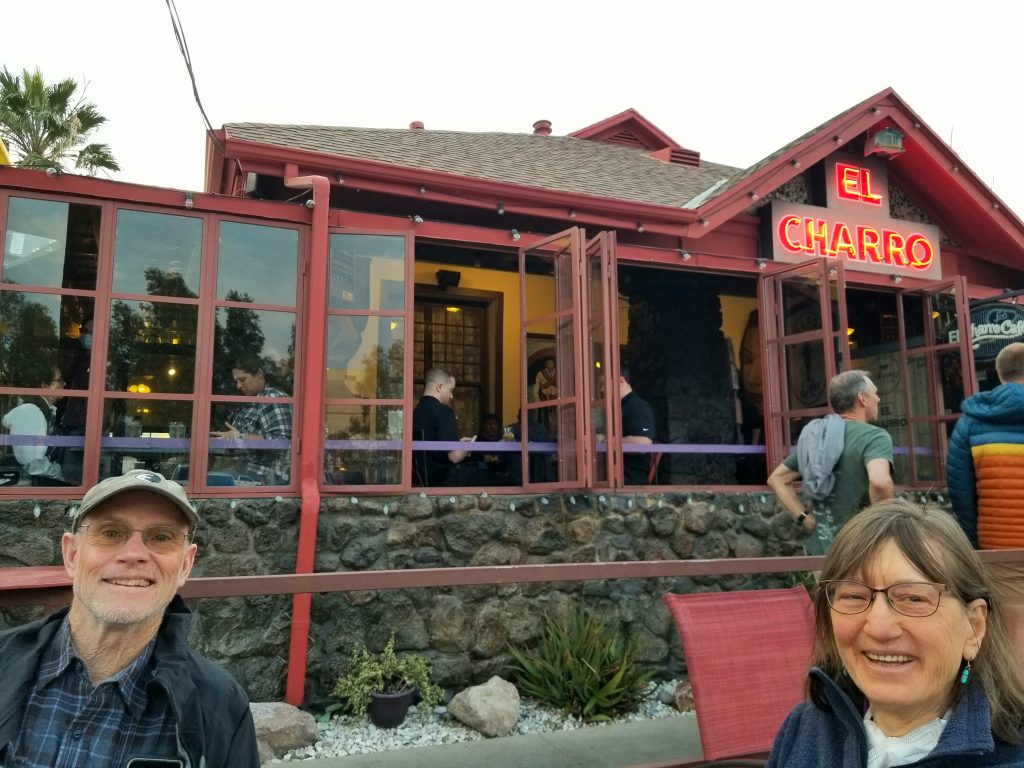
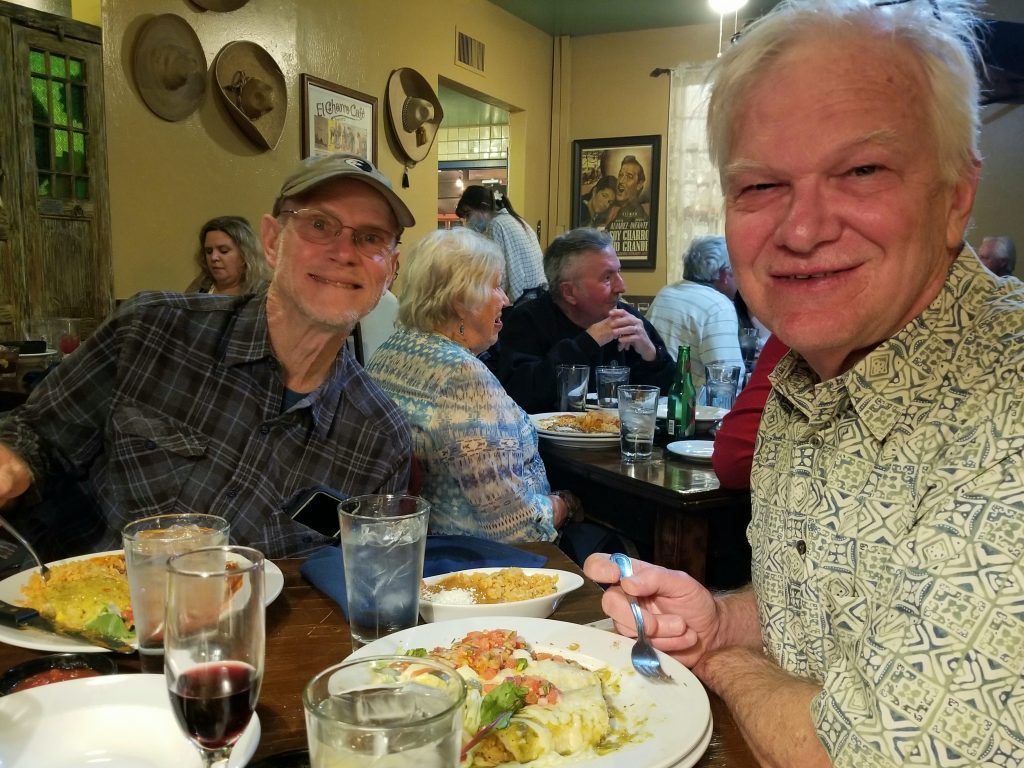
For our last day with Kim and Suzie, the girls went to an historic mission while the guys went to a brewery(!!!). Kim and Hank enjoyed beer and snacks at Harbottle Brewery in East Tucson.
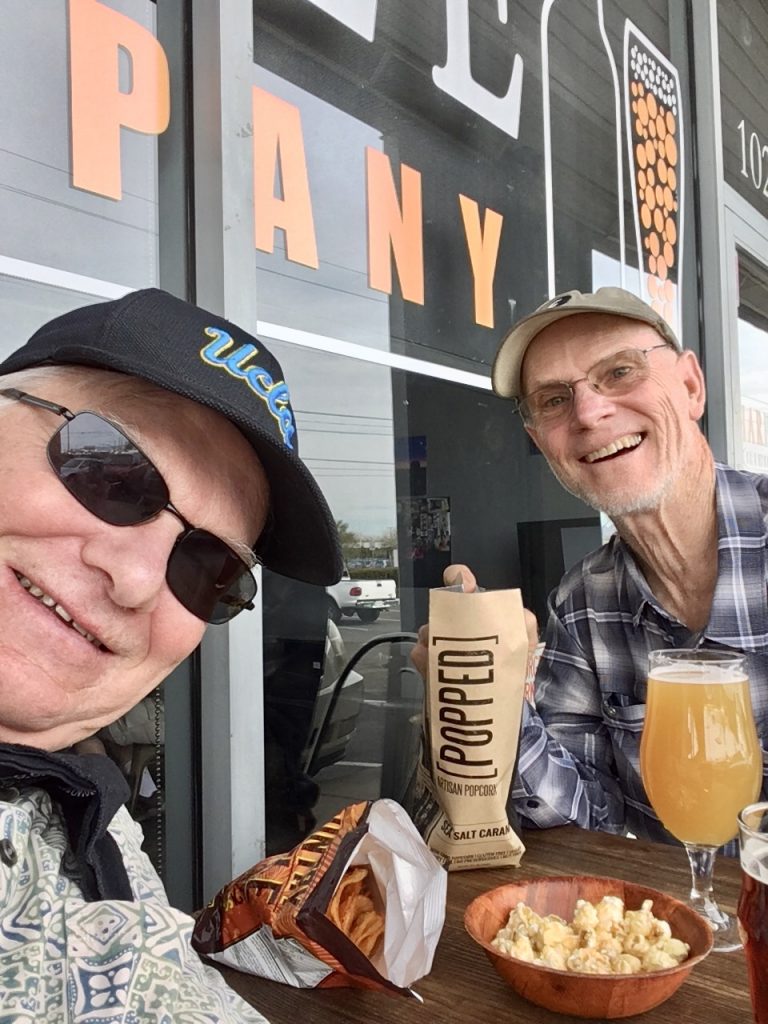
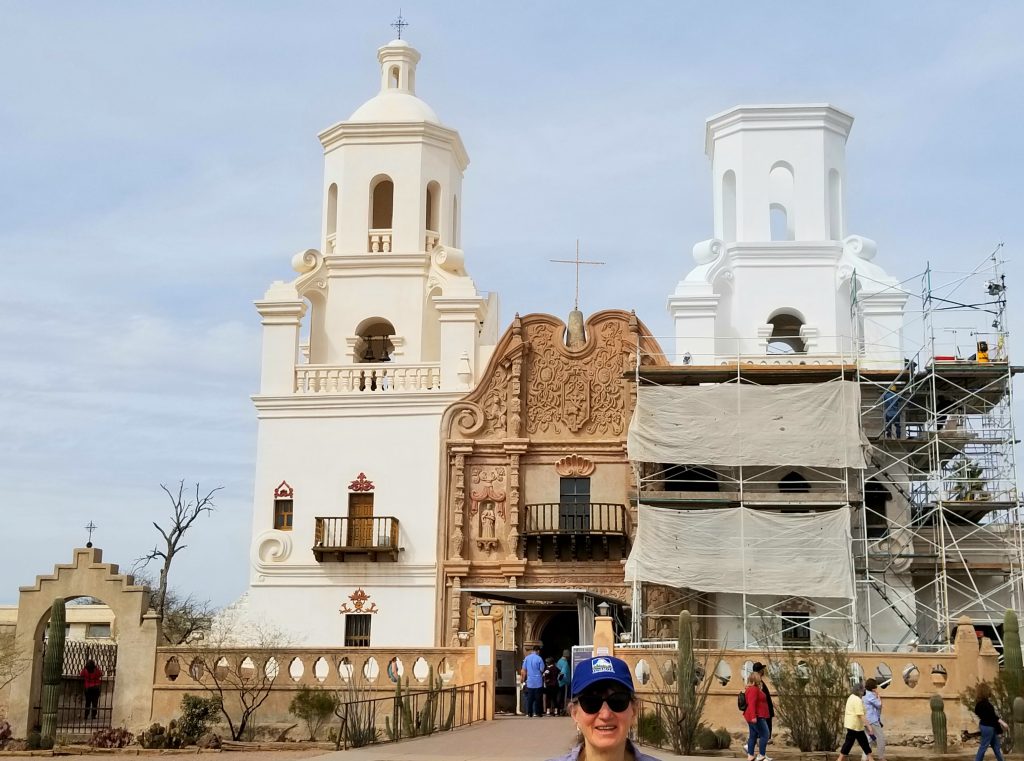
Suzie and I headed south to the Mission San Xavier del Bac, the White Dove of the Desert, a stunning structure that combines Spanish, Baroque, and Moorish architecture. The white stucco façade really helps the church building stand out in this otherwise barren landscape. The Tohono O’odham Nation operates the mission, and its people are descendants of the Hohokam people who lived throughout the Sonoran Desert many hundreds of years ago.
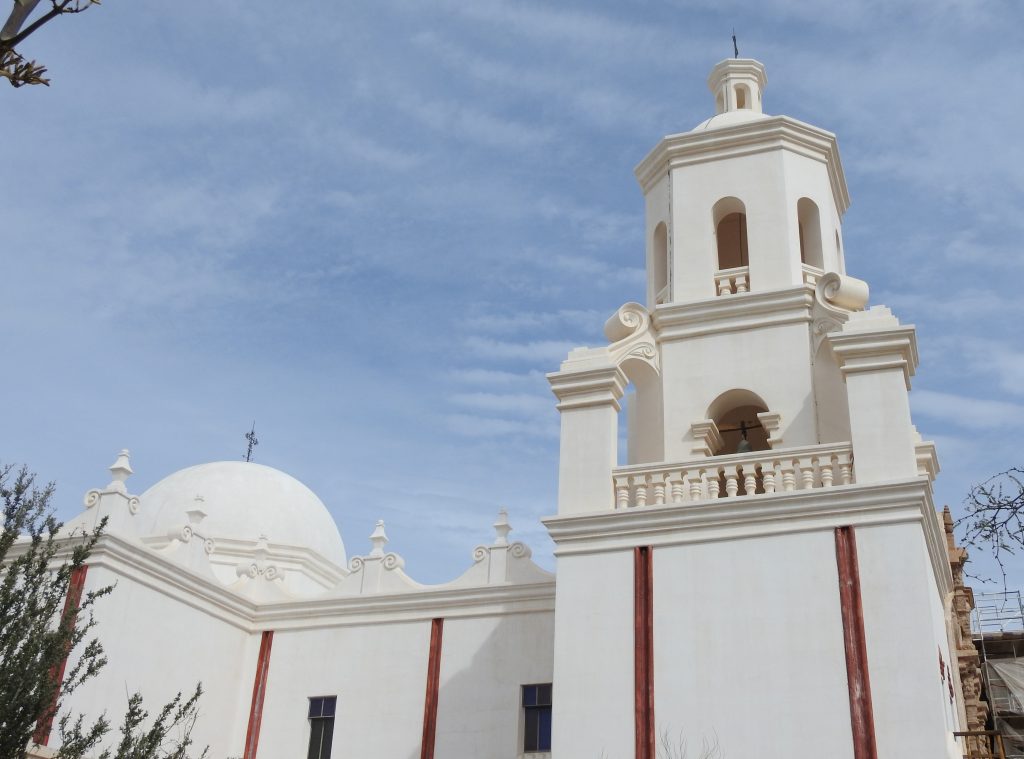
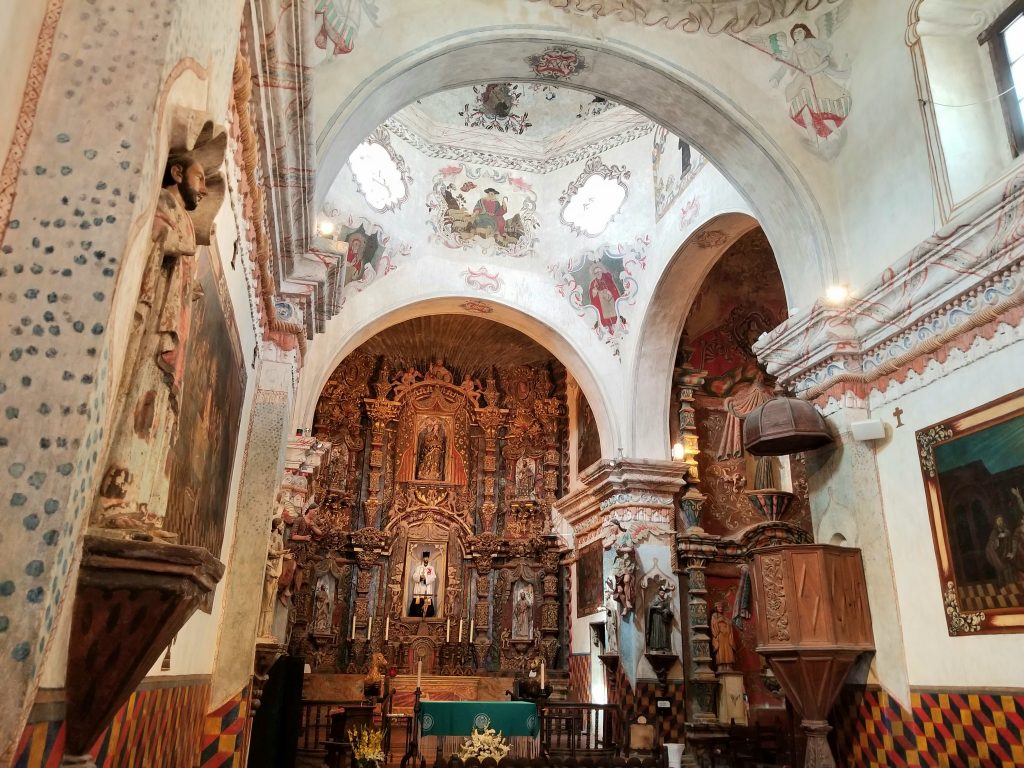
The San Xavier Mission was founded by Jesuit Father Eusebio Kino in 1692, but the church structure was built 100 years later by Franciscans, who still operate the school there. Quite different from the Spanish missions in California, this structure is widely considered to be the finest example of Spanish Colonial architecture in the U.S.
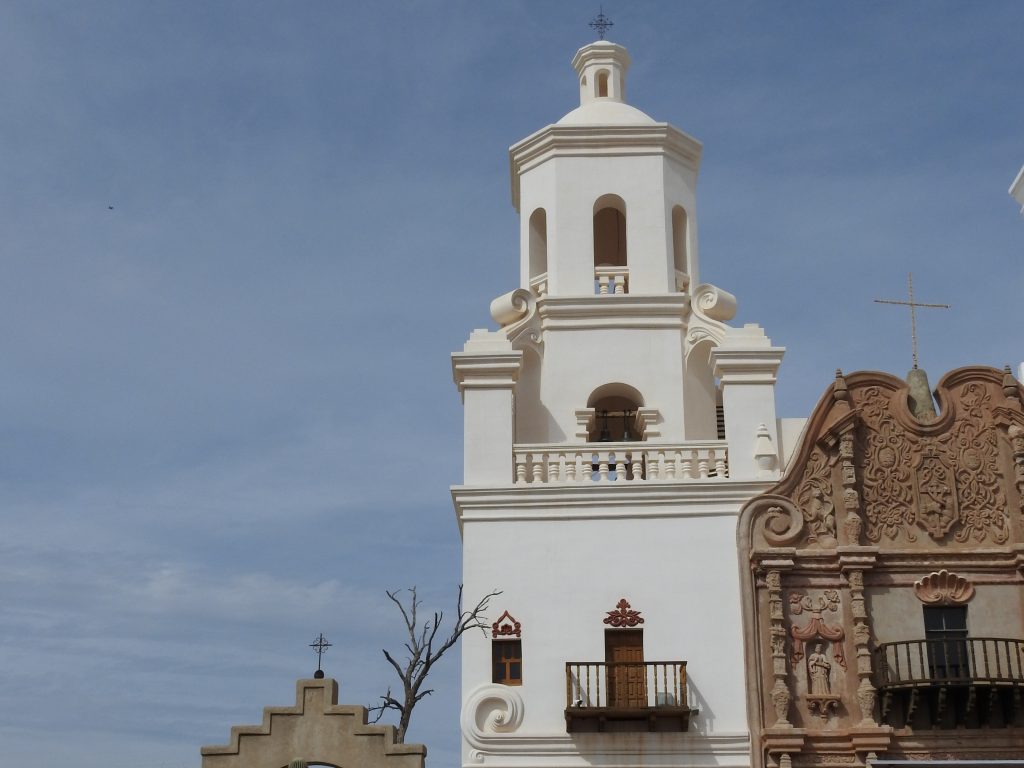
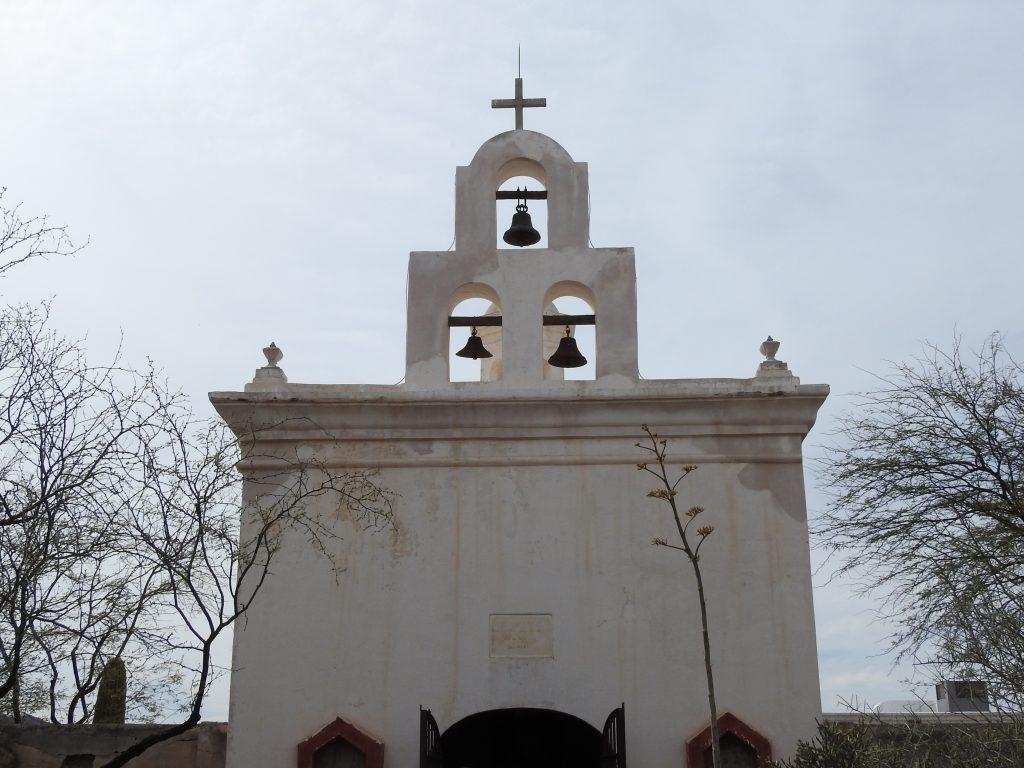
We celebrated Kim and Suzie’s last night in Tucson by watching The Good, the Bad, and the Ugly, though it wasn’t filmed or set in the Tucson area (filmed in Europe and set in New Mexico, so close enough). Lots of movies were set and filmed nearby at Old Tucson, but it was unfortunately closed during our visit.
For our last day in Tucson, we drove back to Saguaro National Park to walk the ½-mile Desert Discovery Trail. Next, we revisited the Bajada Loop Road in hopes of snagging a parking spot at the Valley View Trailhead. No such luck, so we circled back to the Signal Hill area, and hiked the Wild Dog Trail, which connects to the Valley View Trail for a total of 2.6 miles round trip.
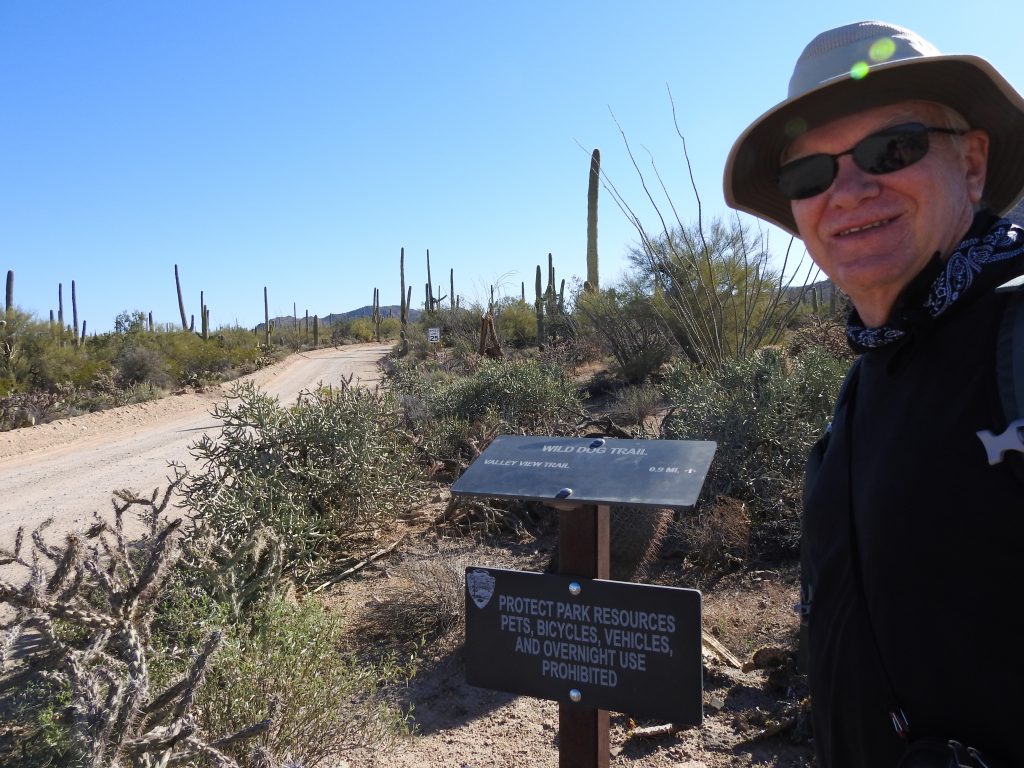
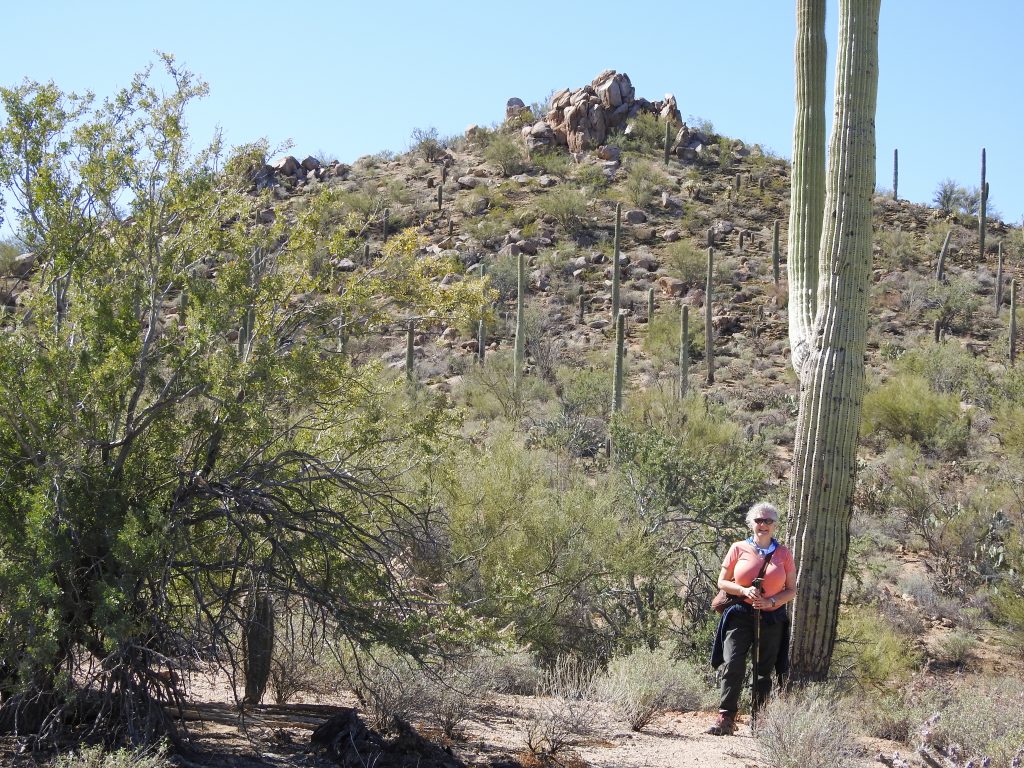
No wild dogs spotted, but lots of rock squirrels (that looked like marmots because they were so huge), lizards, landscapes, and the beginnings of spring blooms made this a very interesting hike, though it would be brutally hot in another month or two.
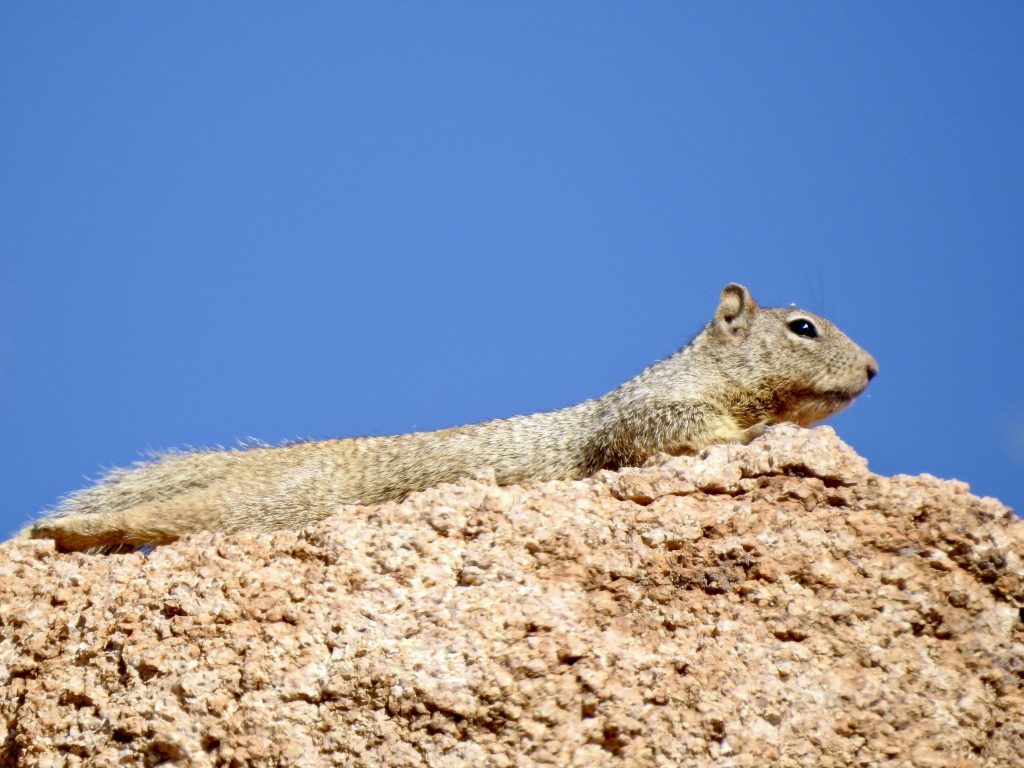
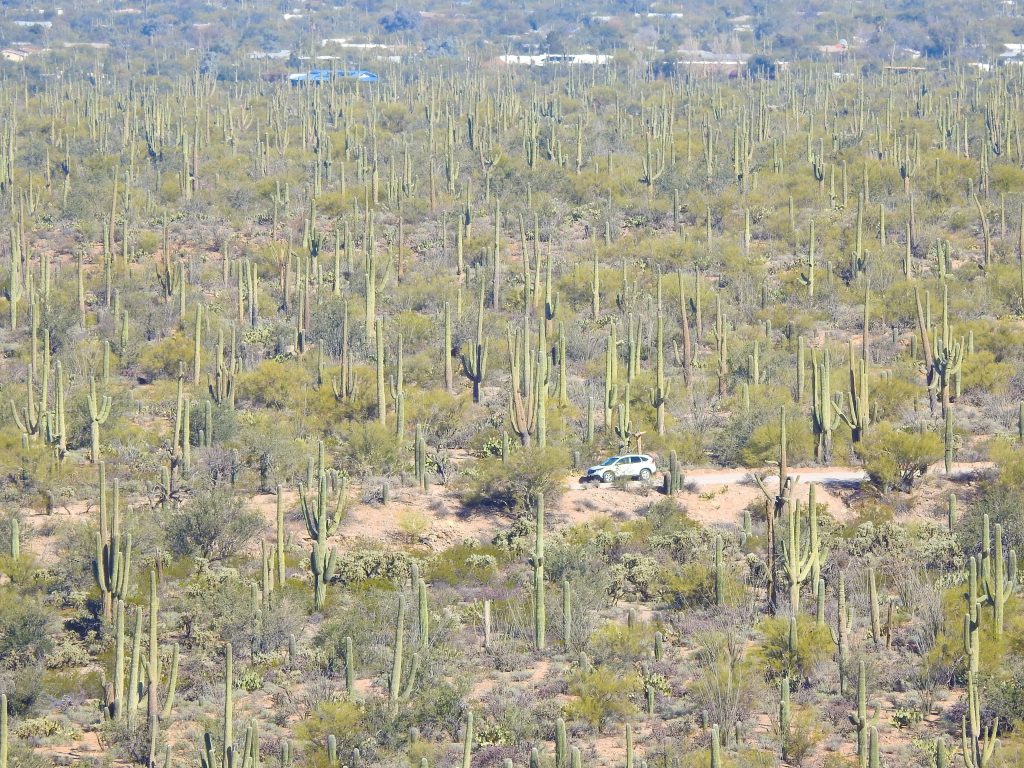
For our last memories of Tucson, we drove up Gates Pass Road again toward evening to enjoy a hike and great views at the top of the pass.
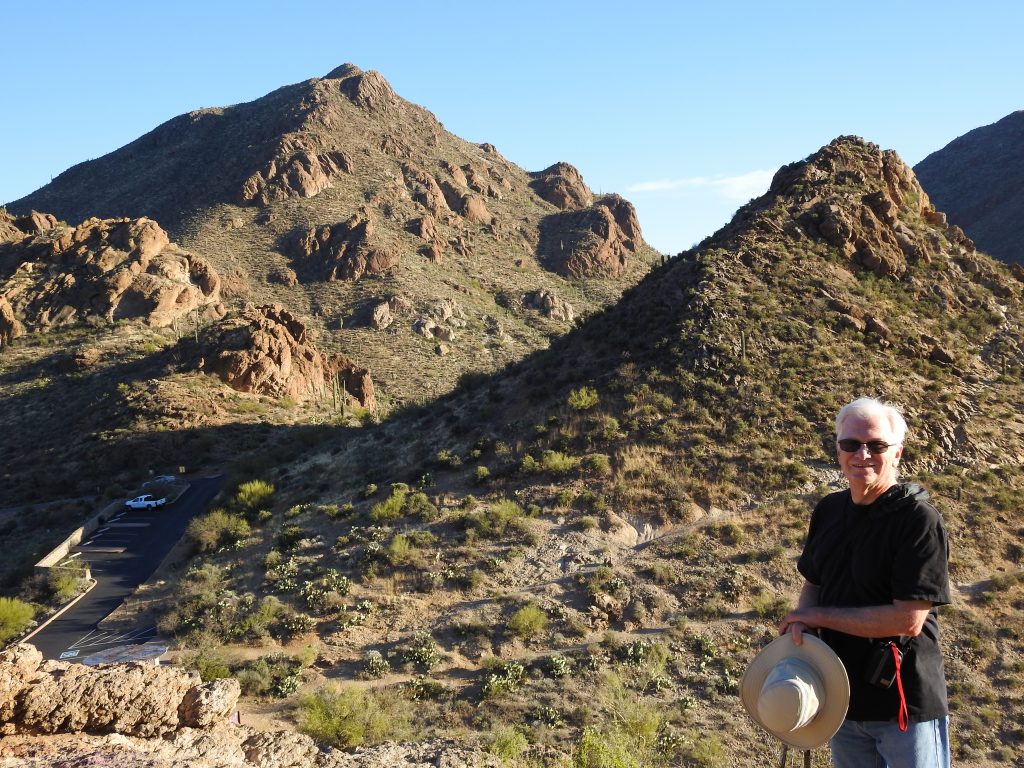
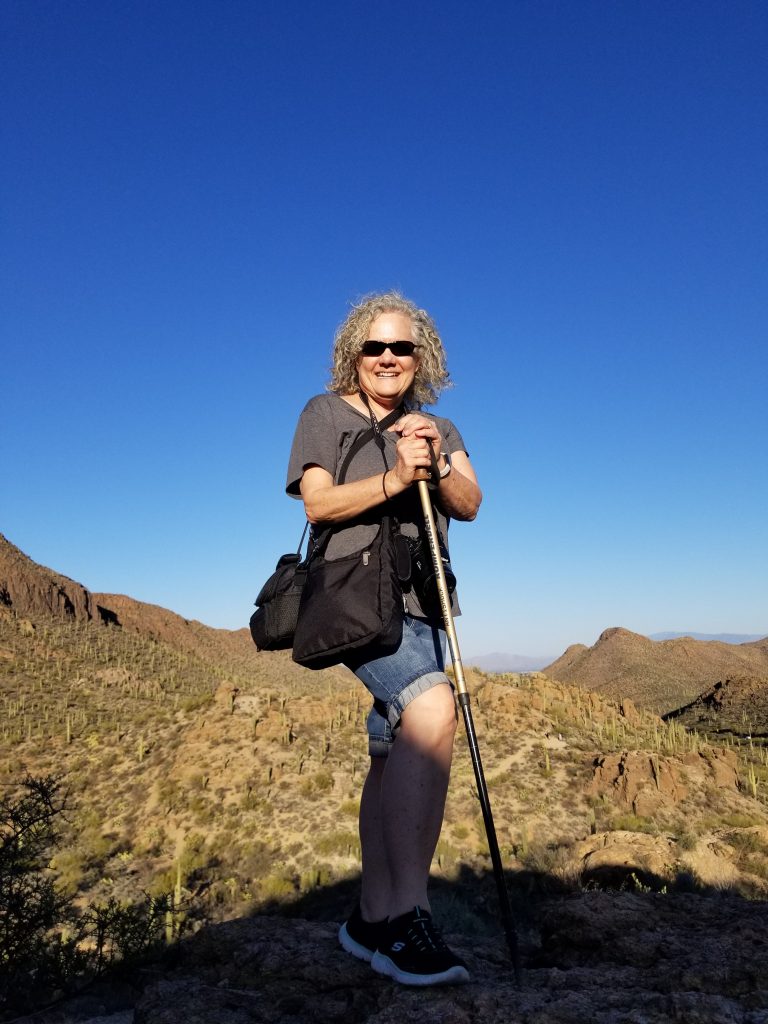
Fourth stop—Back to the Phoenix area, this time camping in Goodyear, southwest of the city. No spring training baseball games, alas, but we had a great visit with my stepmother Joan and her nephew Tom, who relocated here last fall.
From Tom’s house you can watch desert cottontail rabbits and Gambel’s quail scurrying in the distance, but we didn’t see any rattlesnakes (though they are common in the area).
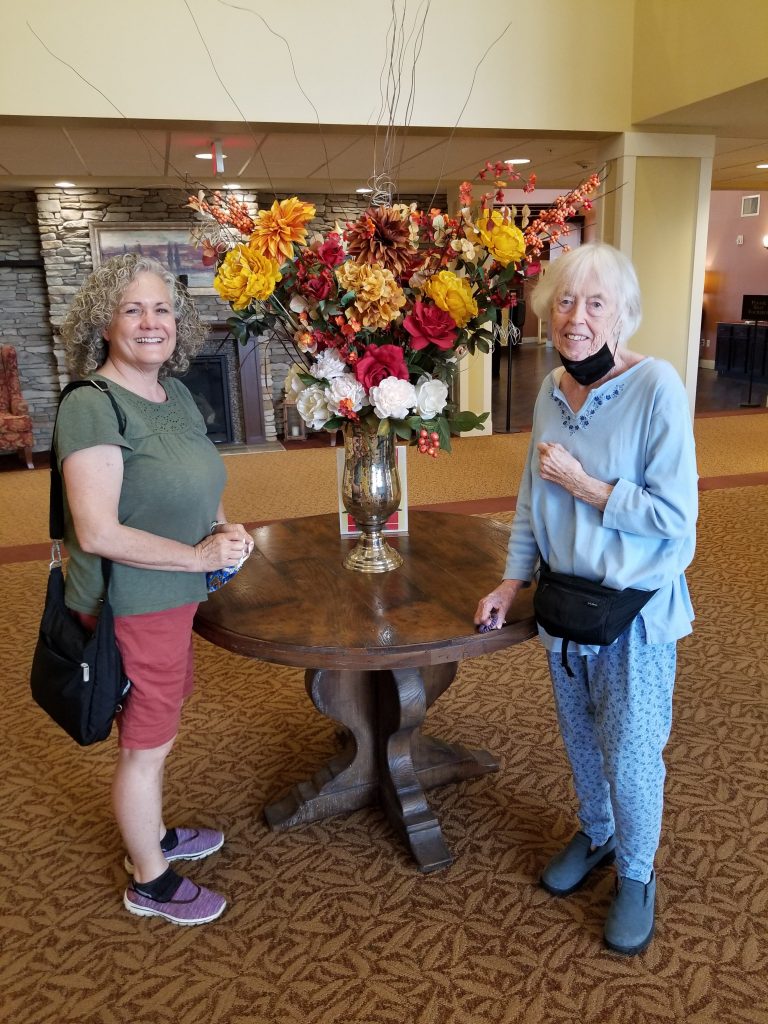
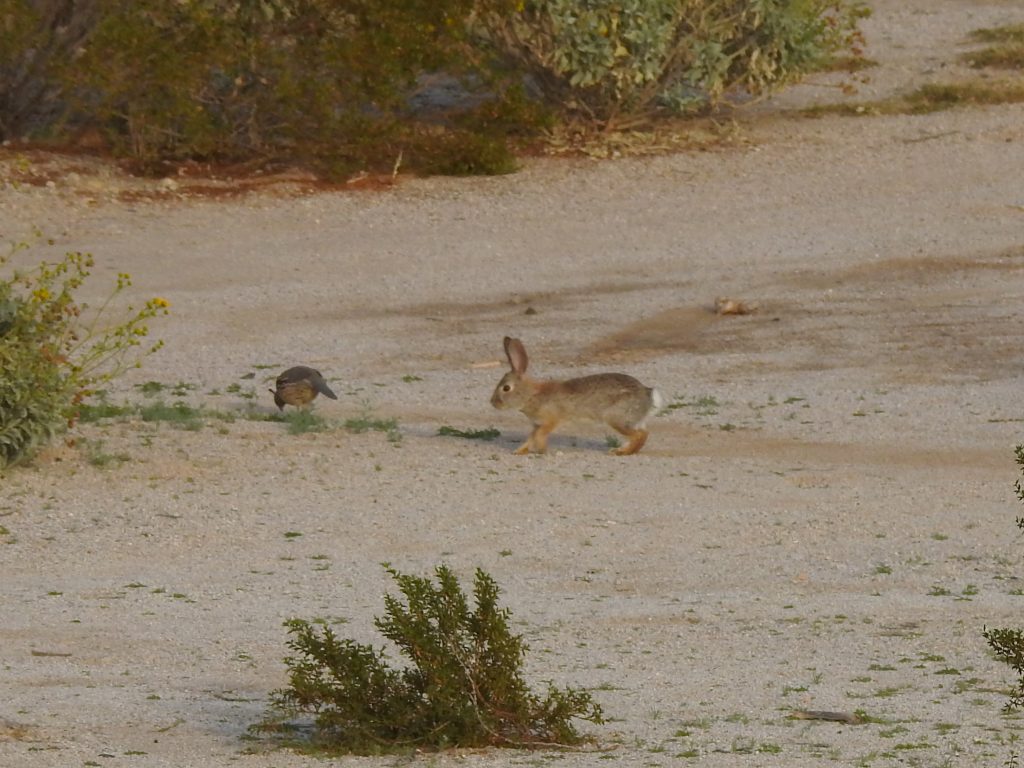
Next morning, we and Tom took his four dogs for a walk around the nearby lake, enjoying the mild temperatures and lots of birds.
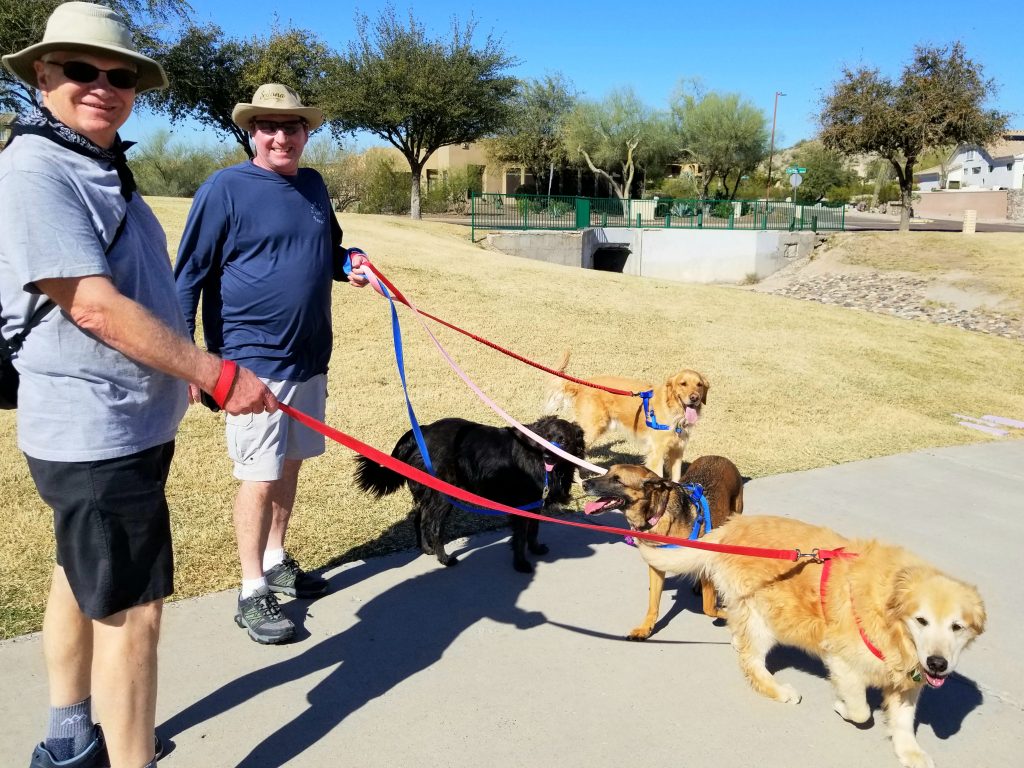
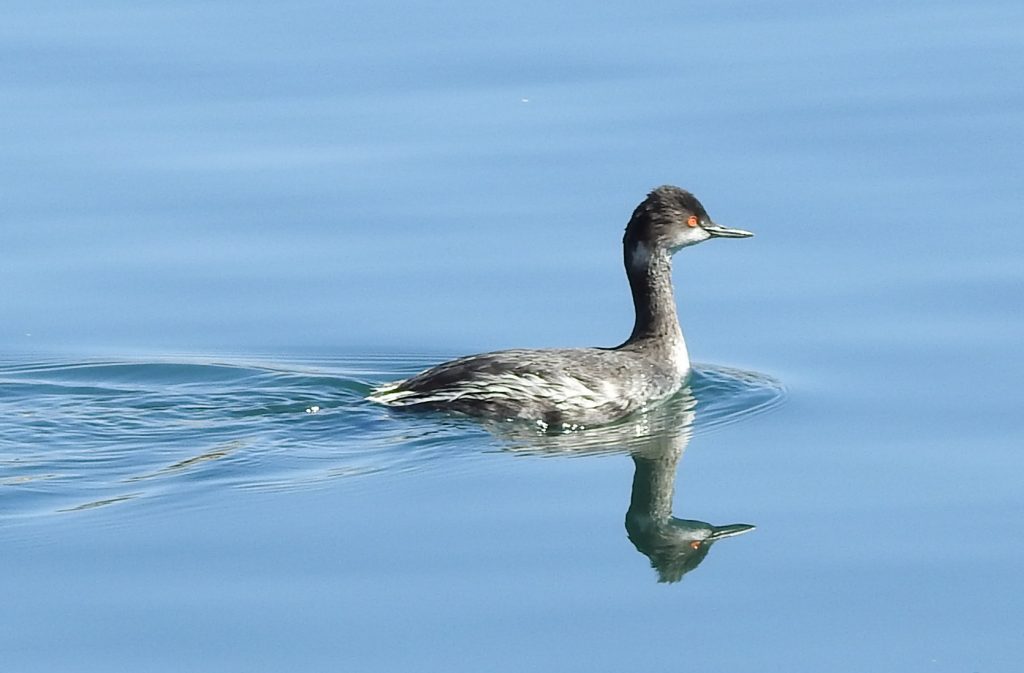
Fifth stop—Heading toward home, we spent one night in Palm Desert, thankful that the temperature was mild, the rain passed us by, and the winds were not too challenging to drive the 10 freeway. We finally got to use our pickleball set, as the court was right next to our campsite—so no excuses. Amazingly, in our one official game, I managed to beat Hank 14-12 (I think he took it easy on me 😊).
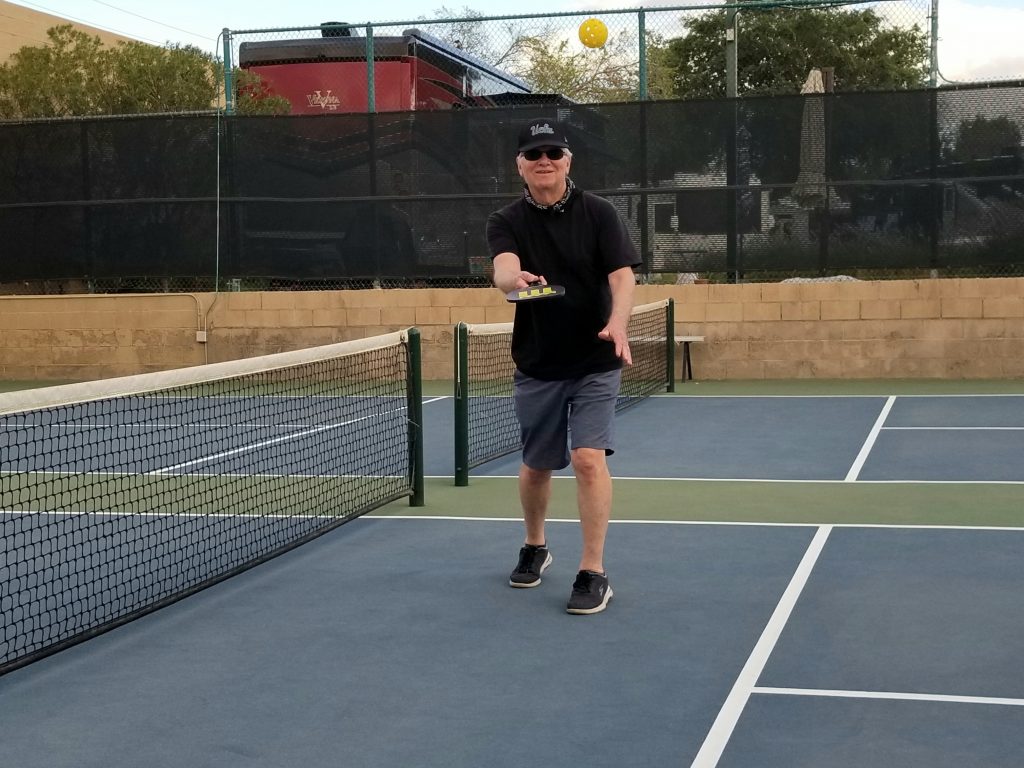
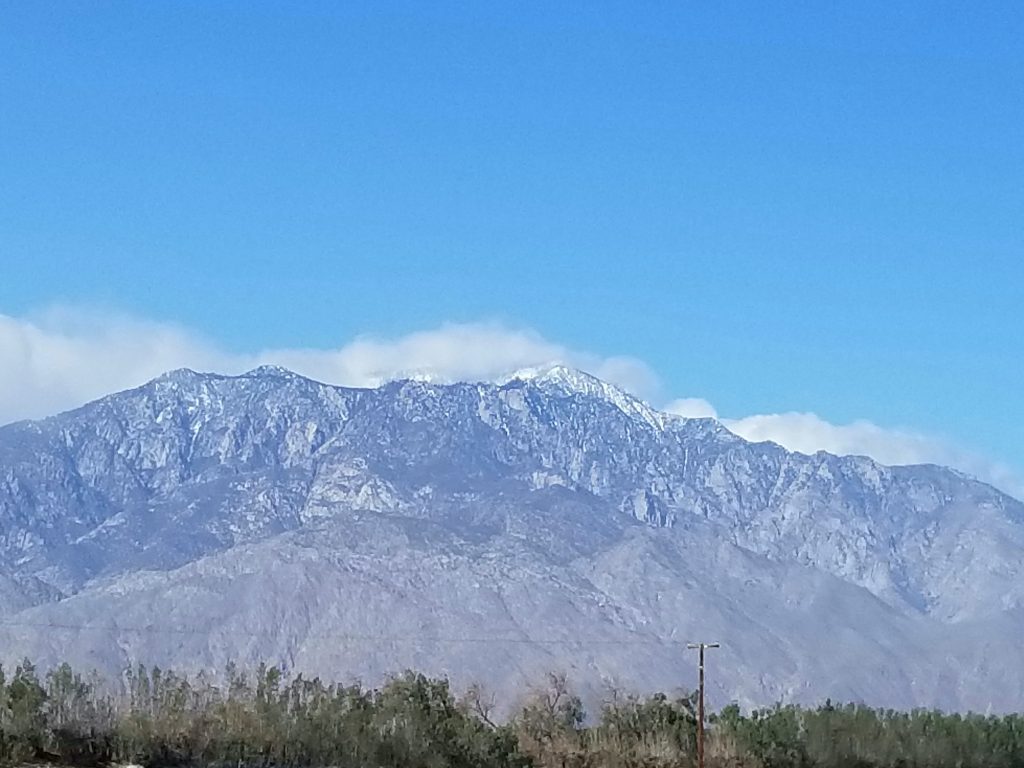
We made it back home in time to watch UCLA beat USC in basketball to close out the season (sorry, friend Kim!). What a great way to end our two weeks of desert discoveries!
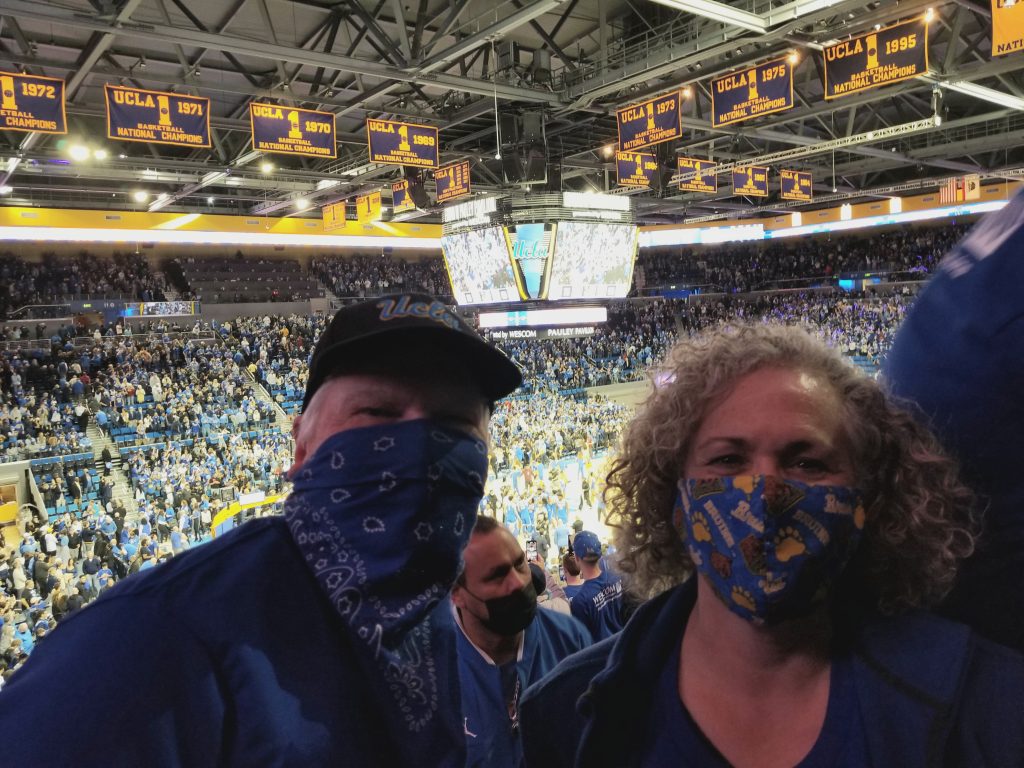
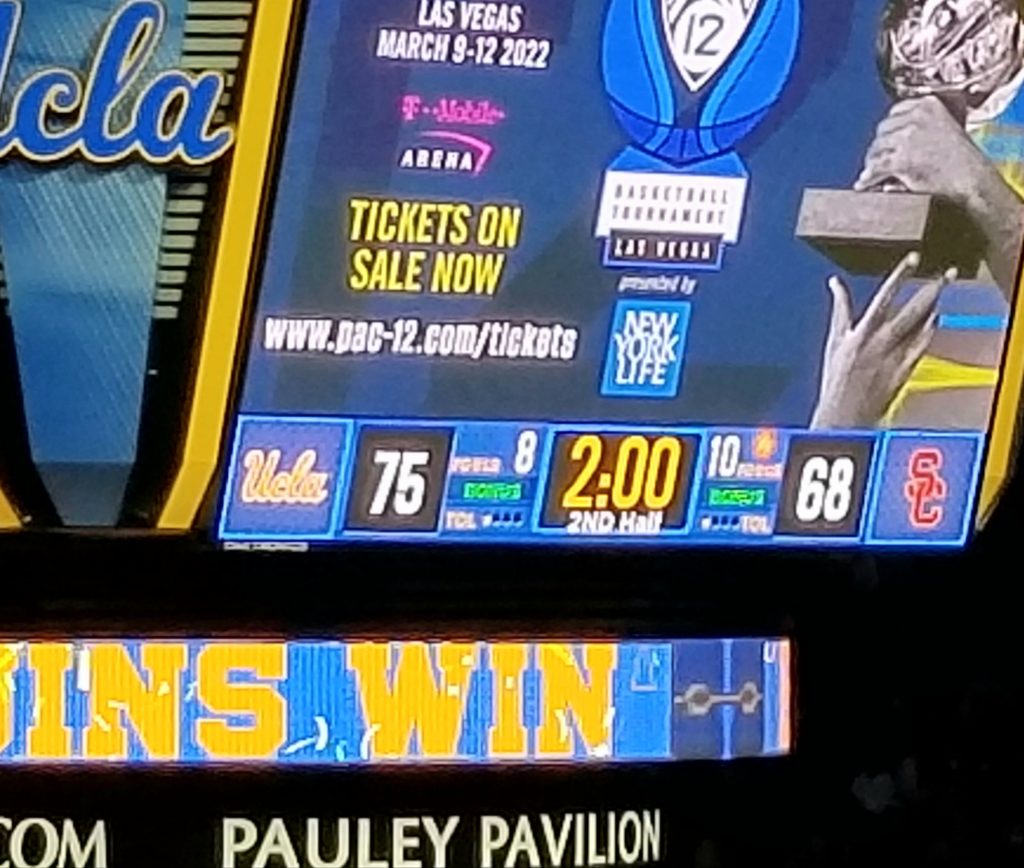
Here are a few bugs, birds, and butterflies that Hank spotted and photographed on our trip. This has become quite a hobby for him! Till the next trip, thanks for reading 
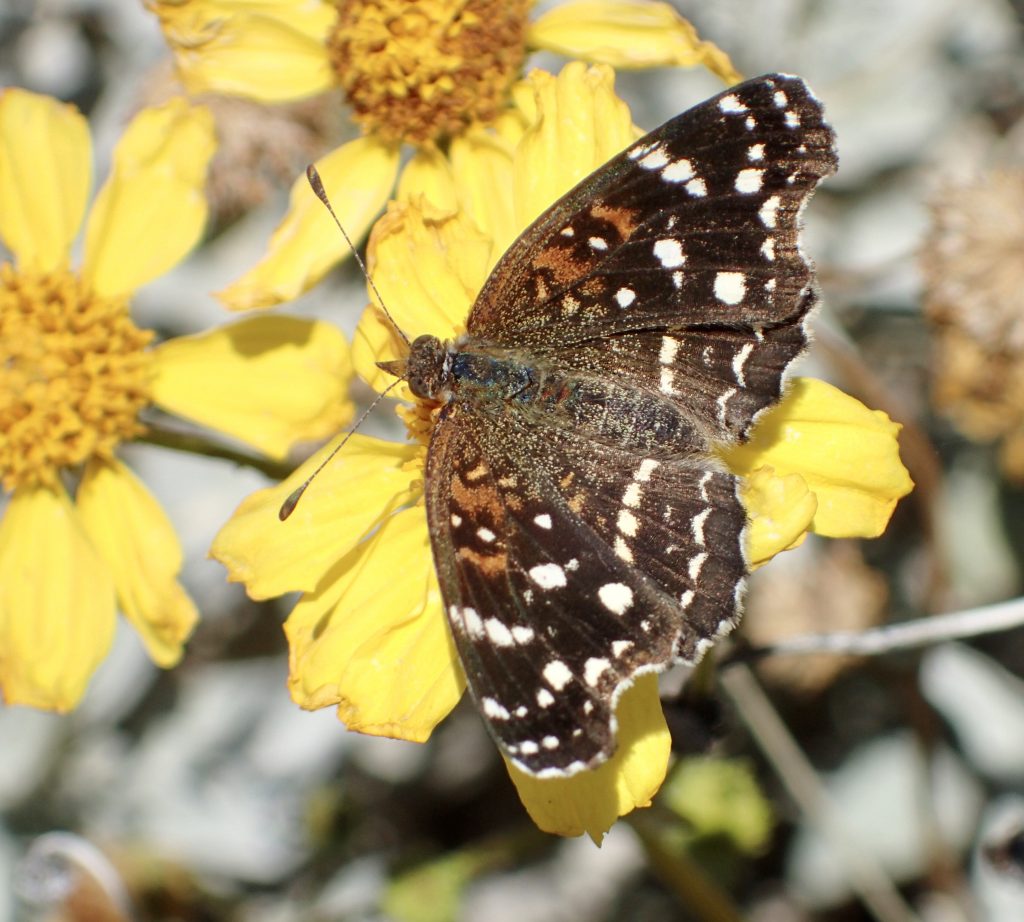
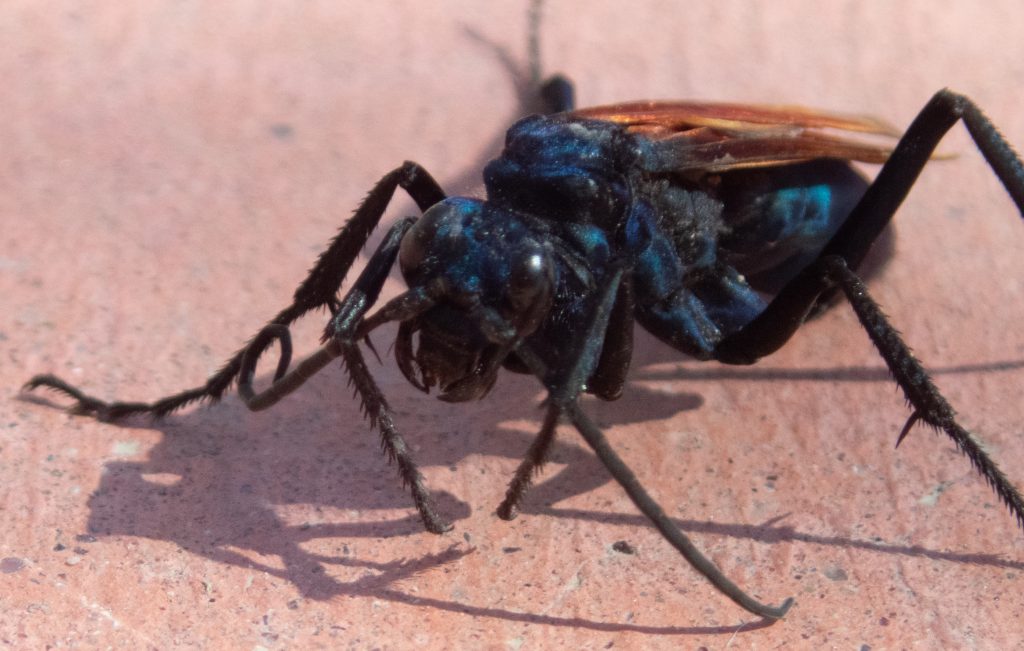
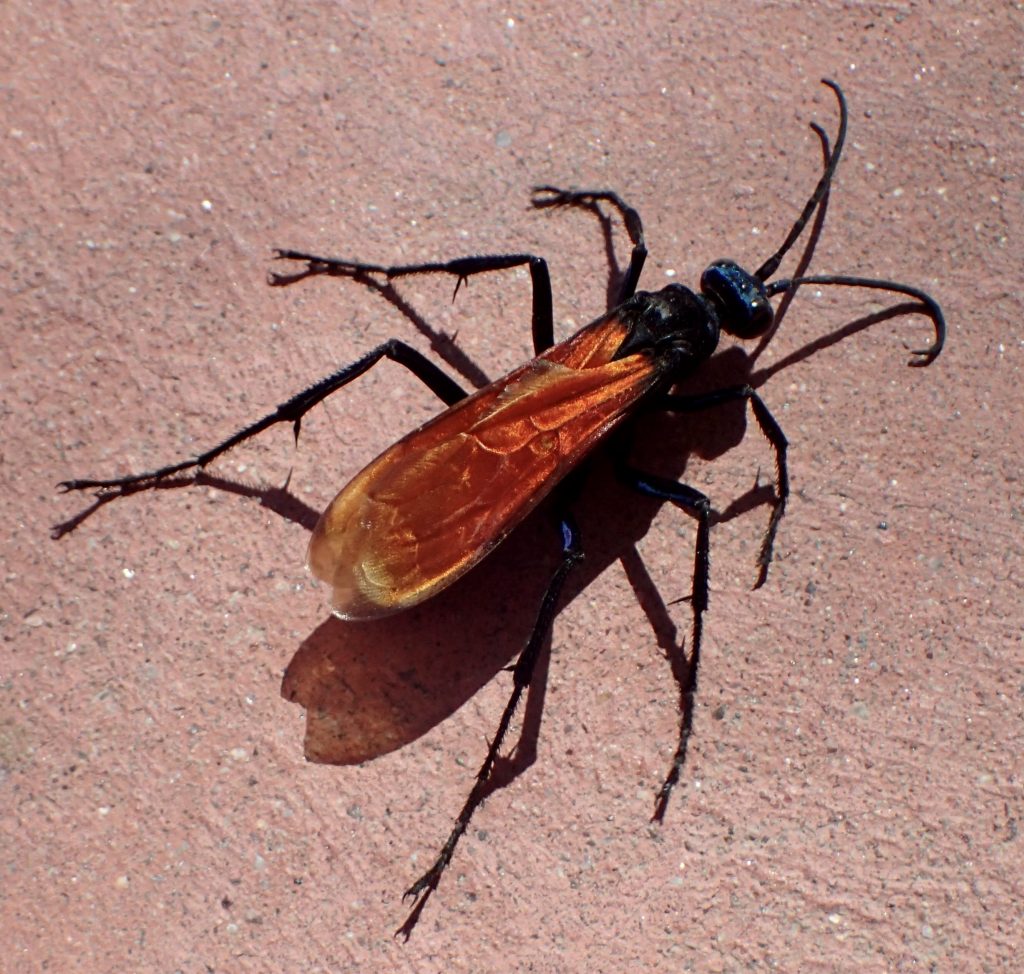
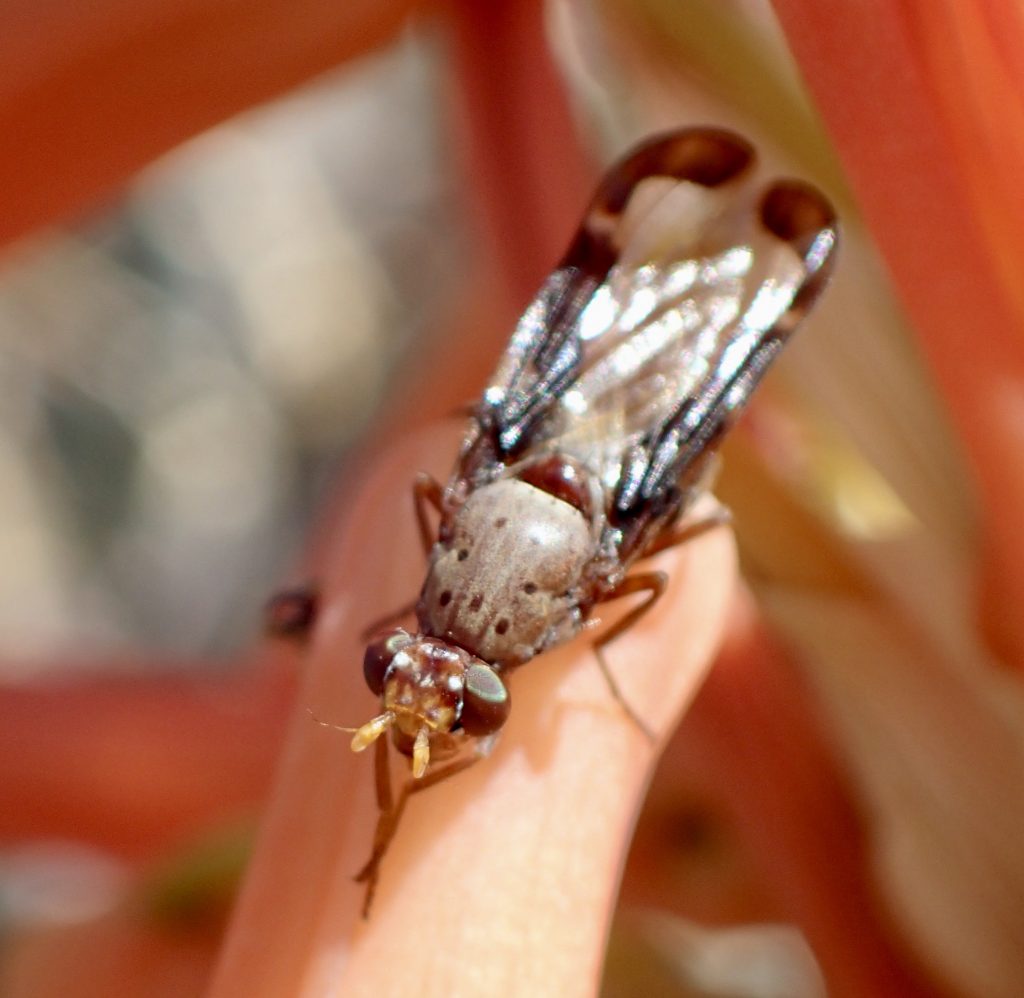
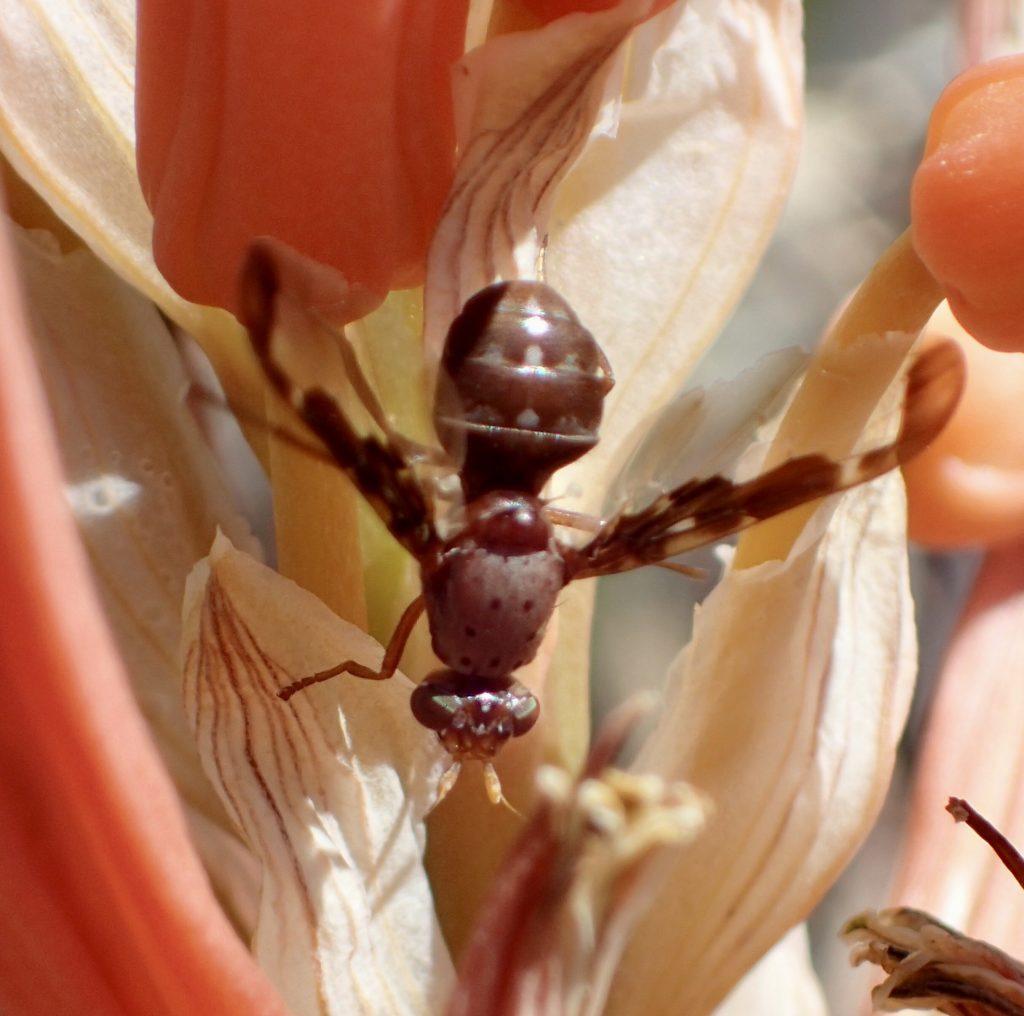
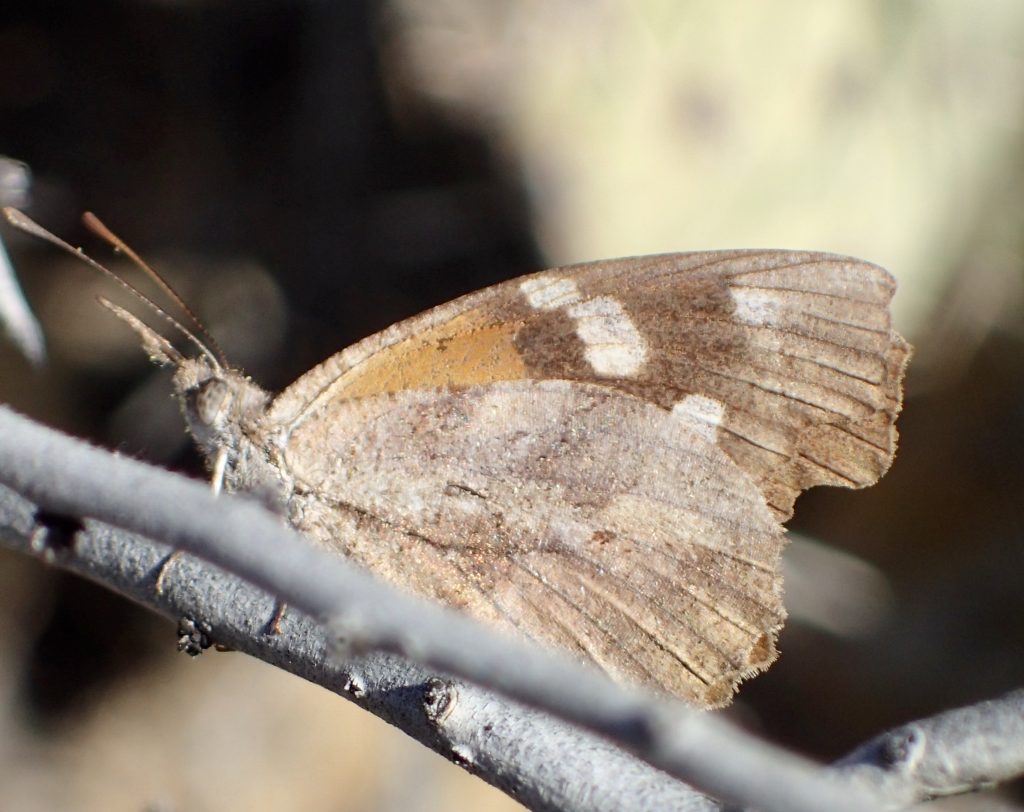
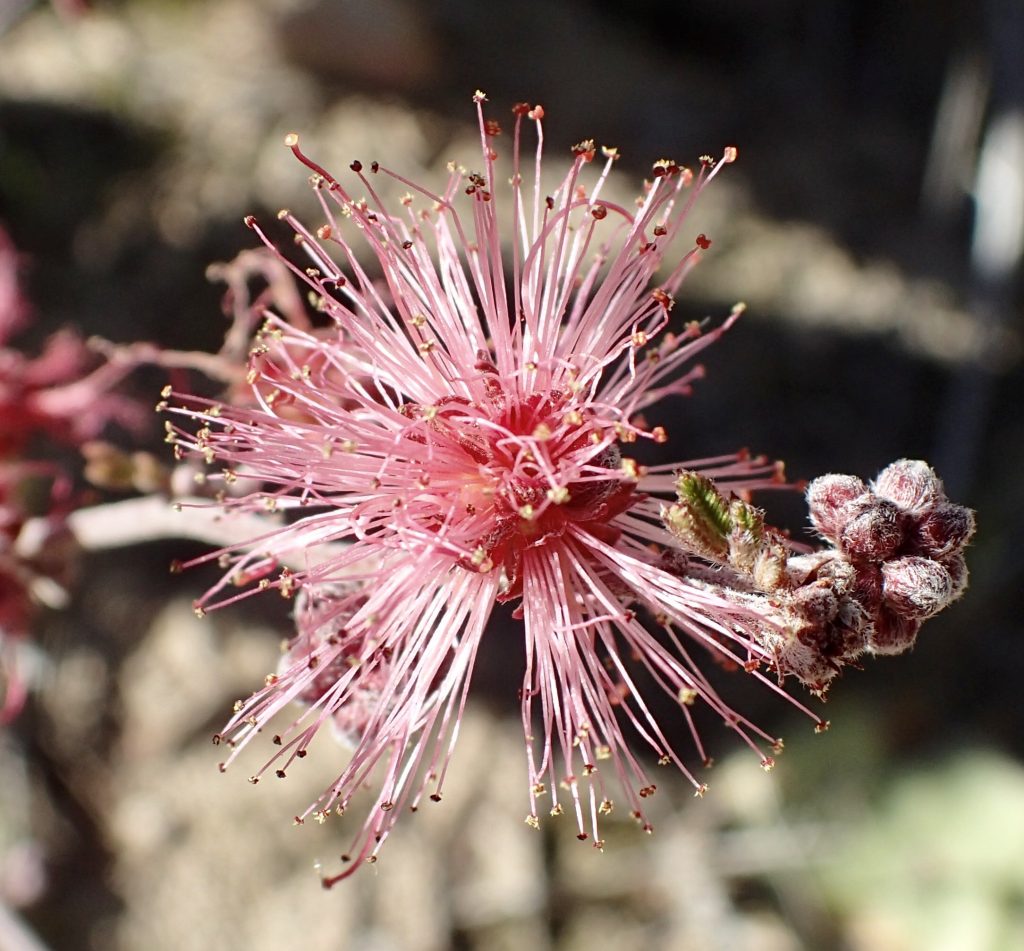
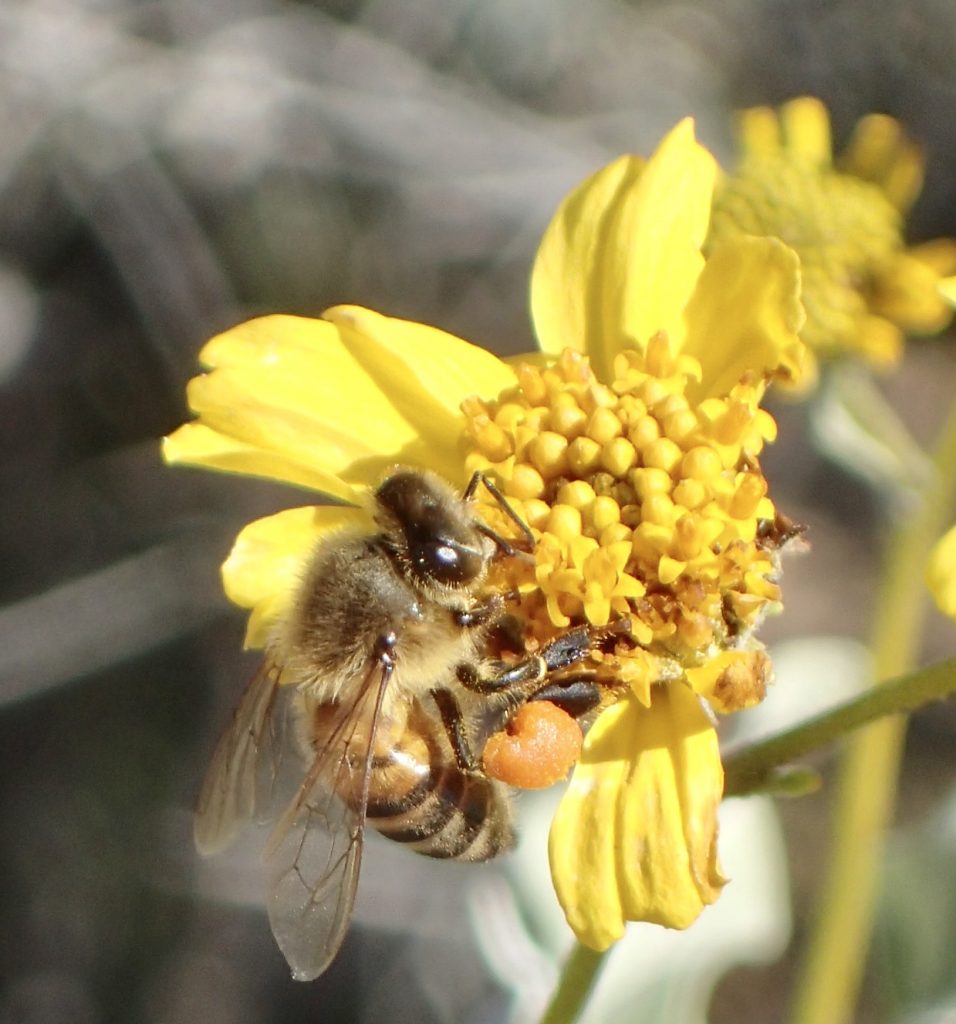
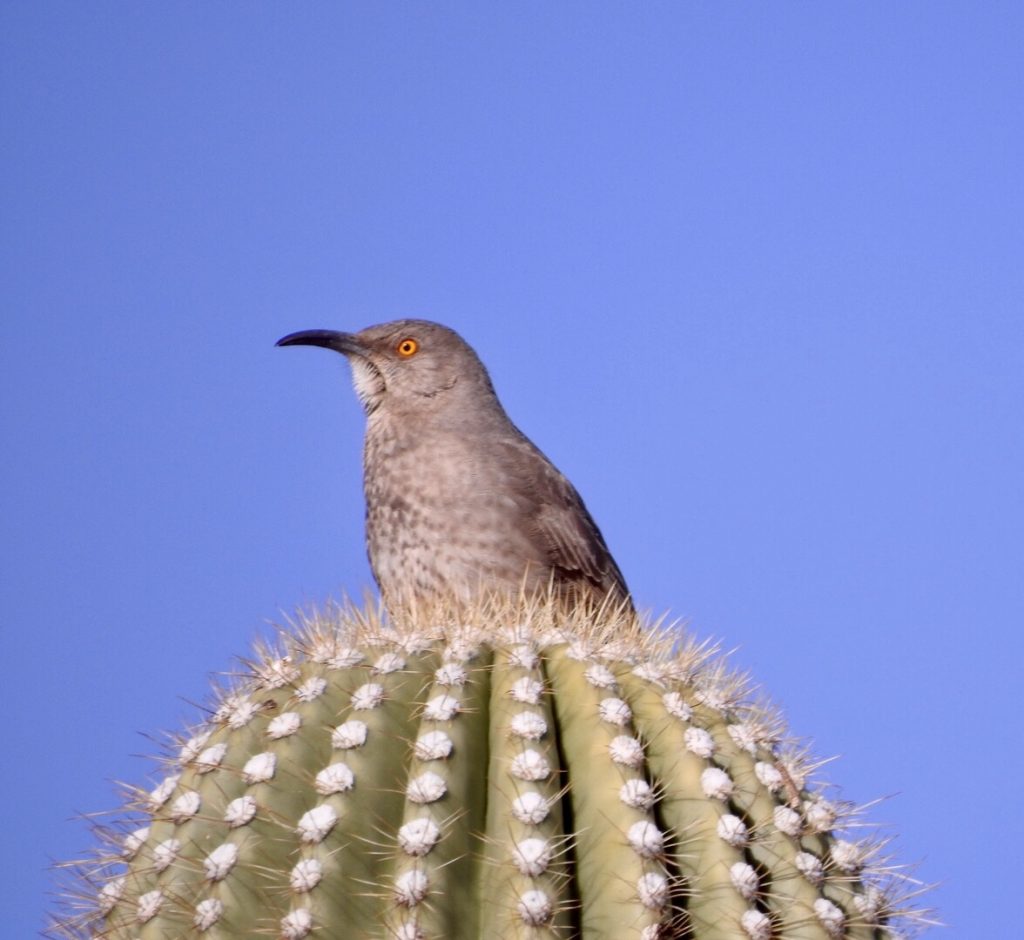
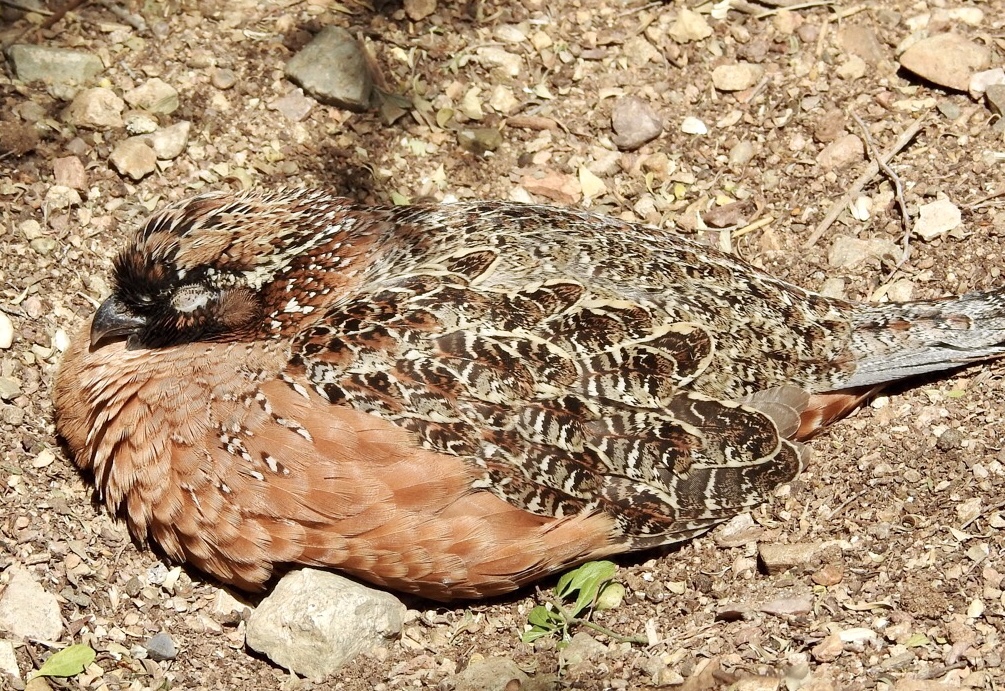

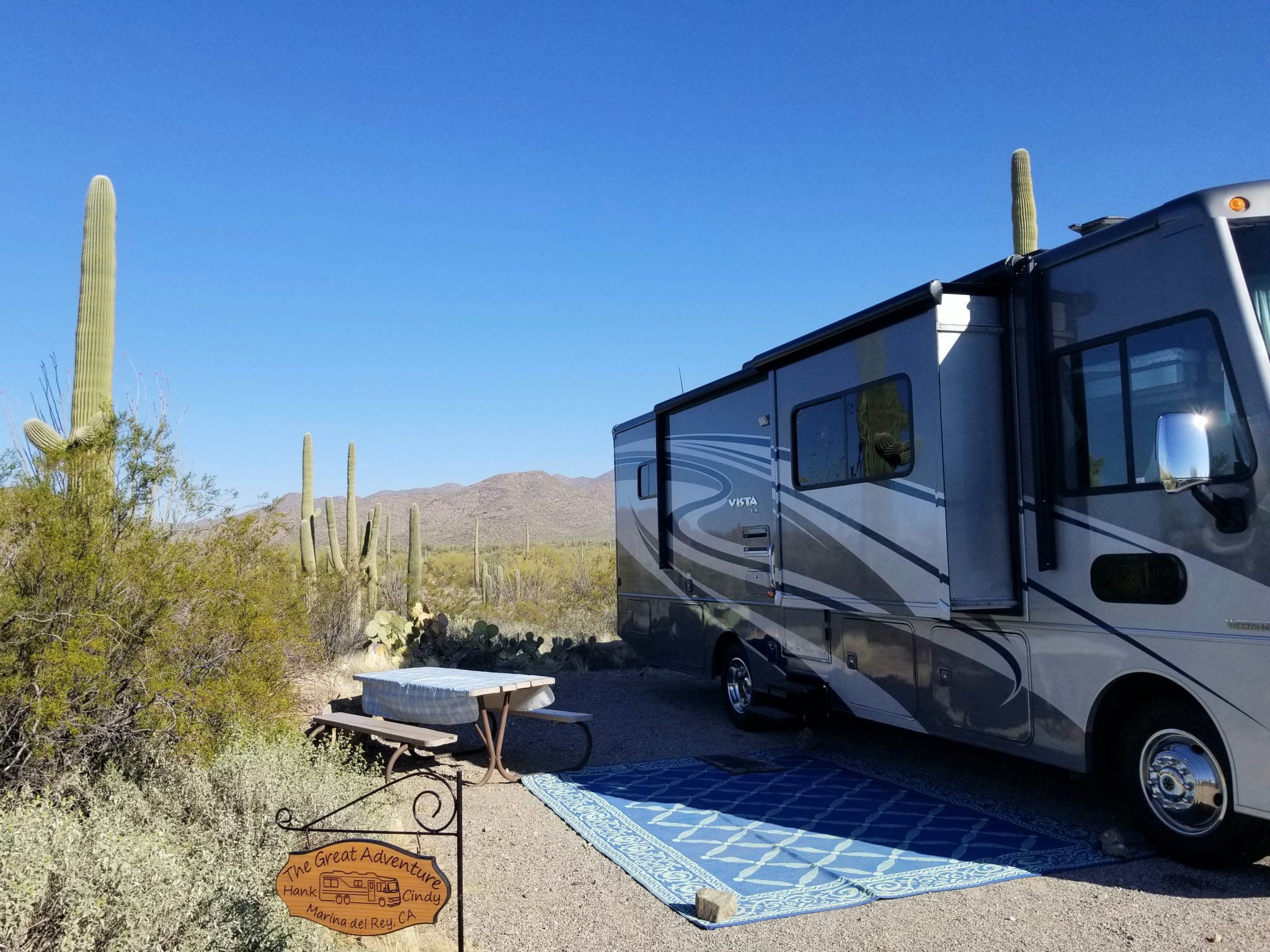
You guys are amazing – like National Geographic photographers – and you even know all the right names! Most people would be lucky to see one apex predator and you saw (and had amazing photographs) of four: The Cougar, the bobcat the ocelot and a Mexican Grey wolf. Be honest… were you in a zoo?
I finish teaching Friday noon then we fly to Fresno to teach near Yosemite for a week. After that Honolulu. So half-way through our itinerary.
Bless you and thanks a million.
Of course we’re in a zoo!! Desert Museum in Tucson! Great place to visit. We camped about 5 miles away. We need to get back to Yosemite! Missed you guys!
Great narratives about your travels! And beautiful pictures too. So glad pickleball is included in your fun agenda as well!
??
No excuse for not playing pickle ball. Right next to our site. Cindy won fair and square. It was the wind! Threw my shot off!
Great photos and fun trip. So glad we were able to meet up with you!
Great photos and what a fun trip. So glad we were able to meet up with you!